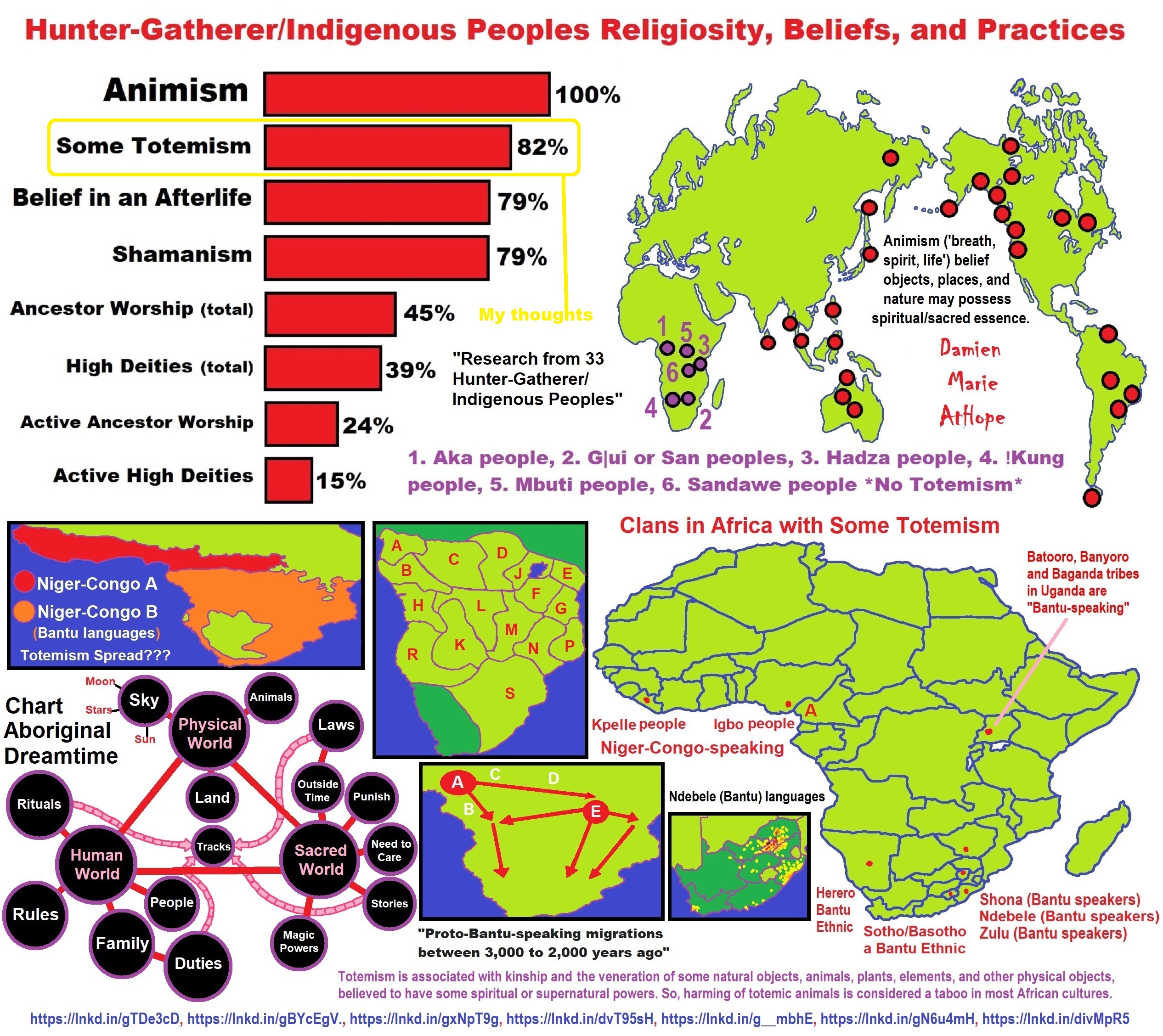
ref, ref, ref, ref, ref, ref, ref, ref, ref, ref, ref, ref, ref, ref
Harrat Ash Shaam: 2670 BCE Eruption: Link, Link
“Mount Ararat destroyed and buried at least one Kura–Araxes culture settlement and caused numerous fatalities in 2500–2400 BCE.” ref
Kura–Araxes culture: Link, Link
Minoan eruption: Link
Leviathan (Sea Monster/Sea Volcano): Link, Link
Kenite hypothesis of the origin of Yahweh: Link
Yahweh Bible God: Link
Yahwism (ancient Israelite religion): Link
YHWH/Yahweh: Kenite God of Metallurgy and volcanic eruption: Link
“The Bronze Age is characterised by the widespread use of bronze, though the introduction and development of bronze technology were not universally synchronous. Bronze was independently discovered in the Maykop culture of the North Caucasus as early as the mid-4th millennium BCE or 5,500 years ago, which makes them the producers of the oldest-known bronze. The Bronze Age was a time of extensive use of metals and the development of trade networks. West Asia and the Near East were the first regions to enter the Bronze Age, beginning with the rise of the Mesopotamian civilization of Sumer in the mid-4th millennium BCE. Cultures in the ancient Near East practised intensive year-round agriculture; developed writing systems; invented the potter’s wheel, created centralised governments (usually in the form of hereditary monarchies), formulated written law codes, developed city-states, nation-states and empires; embarked on advanced architectural projects; and introduced social stratification, economic and civil administration, slavery, and practised organised warfare, medicine, and religion. Societies in the region laid the foundations for astronomy, mathematics, and astrology. The Bronze Age in the Near East can be divided into Early, Middle and Late periods. The dates and phases below apply solely to the Near East, not universally. However, some archaeologists propose a “high chronology”, which extends periods such as the Intermediate Bronze Age by 300 to 500–600 years, based on material analysis of the southern Levant in cities such as Hazor, Jericho, and Beit She’an. Early Bronze Age: 3300–2100 BCE; Middle Bronze Age: 2100–1550 BCE; Late Bronze Age: 1550–1200 BCE. The Israelites were an ancient Semitic-speaking people of the Ancient Near East who inhabited part of Canaan during the tribal and monarchic periods (15th–6th centuries BCE or 3,500 to 2,600 years ago), and lived in the region in smaller numbers after the fall of the monarchy. The name “Israel” first appears c. 1209 BCE, at the end of the Late Bronze Age and the very beginning of the Iron Age, on the Merneptah Stele raised by the Egyptian pharaoh Merneptah.” ref
Beyond the Volcano, Yahwah is related to Wine?
AI Overview: Yahweh and Dionysus, despite belonging to different religious traditions, share striking similarities. Both deities are associated with ecstatic worship, subversive influence against established religious norms, and a connection to both life and death. Additionally, some scholars propose a historical link, suggesting that Dionysus may have been an Aegean counterpart to Yahweh during the Bronze Age. Some scholars propose that during the Bronze Age, Dionysus was a deity in the Aegean region who shared characteristics with Yahweh, the Canaanite god of metallurgy. Other scholars suggest that the identification of Yahweh with Dionysus could be an example of interpretatio graeca, where Greek deities were identified with foreign gods, possibly due to the influence of Near Eastern religions during the “orientalizing period”. Some scholars propose that both deities were associated with similar symbols, actions, and theophanies (divine appearances), further supporting the idea of a connection. Some research suggests that the parallels between Yahweh and Dionysus challenge traditional, monotheistic interpretations of the Old Testament, suggesting a more complex and possibly syncretic history of Yahweh’s worship. Some theories propose that the similarities between Dionysus and Jesus, particularly in the Gospel of John, may have facilitated the spread of Christianity among Greek-speaking populations.
“The history of wine dates back at least 8,000 years, not that far from the later Kura–Araxes culture was an archaeological culture that existed from about 6,000 to 4,000 years ago. Evidence suggests that some of the earliest domestication of Vitis vinifera occurred in the area of the modern countries Georgia and Armenia. The oldest-known winery was discovered in the “Areni-1” cave in Vayots Dzor, Armenia. Dated to c. 4100 BCE 6,100 years ago, the site contained a wine press, fermentation vats, jars, and cups.” ref, ref
“Domesticated grapes were abundant in the Near East from the beginning of the early Bronze Age, starting in 3200 BCE. There is increasingly abundant evidence for winemaking in Sumer and Egypt in the 3rd millennium BCE. The spread of wine culture around the Mediterranean was probably due to the influence of the Phoenicians (from c. 1000 BCE or 3,000 years ago) and Greeks (from c. 600 BCE or 2,600 years ago). The Phoenicians exported the wines of Byblos, which were known for their quality into Roman times. Industrialized production of wine in ancient Greece spread across the Italian peninsula and to southern Gaul. The altered consciousness produced by wine has been considered religious since its origin. The ancient Greeks worshiped Dionysus or Bacchus, and the Ancient Romans carried on his cult. Consumption of ritual wine, probably a certain type of sweet wine originally, was part of Jewish practice since Biblical times and, as part of the eucharist commemorating Jesus‘s Last Supper, became even more essential to the Christian Church.” ref
“The Biblical Book of Genesis first mentions the production of wine by Noah following the Great Flood. Greek mythology placed the childhood of Dionysus and his discovery of viticulture at Mount Nysa but had him teach the practice to the peoples of central Anatolia. Because of this, he was rewarded to become a god of wine. In ancient times, the Levant region has played a vital role in the domain of winemaking. Archaeological findings, including charred grape seeds and occasionally intact berries or raisins, have been unearthed in numerous prehistoric and historic sites across Southwest Asia. Having deep historical roots dating back to at least the Bronze Age, winemaking in the Levant retained its importance as a significant regional industry until the decline of Byzantine rule in the 7th century CE. This prolonged history of winemaking significantly enriched the cultural and economic tapestry of ancient societies in the region, giving rise to numerous legends and beliefs intertwined with its consumption in the Mediterranean and Near East.” ref
“Wine held a significant and favored role within ancient Israelite cuisine, serving not only as a dietary staple but also as a crucial element of Israelite cultural and religious practices. In ancient Israel, wine found its place in both everyday use and ceremonial rituals such as sacrificial libations. These traditions became an integral part of Jewish customs and celebrations, upholding the enduring importance of wine within Judaism to this very day. The abundancy of archeological remnants of facilities dedicated to the production of wine (at ancient Gibeon, for example), coupled with detailed depictions of vineyard establishment and grape varieties within the Hebrew Bible, underscore the prominence of wine as the primary alcoholic choice for the ancient Israelites; The word wine appears 142 times in the Bible. Within the Hebrew language, a multitude of terms emerged relating to vines and the various stages of winemaking. Much of modern wine culture derives from the practices of the ancient Greeks. The vine preceded both the Minoan and Mycenaean cultures.” ref
“Biblical descriptions reveal that vineyards in ancient Israel were planted either as dedicated plots or interspersed with other fruit trees, located near homes or in more remote agricultural areas. Vines could be allowed to grow along the ground or trained on trellises or poles. The vines were not harvested until their fourth year, in keeping with Levitical law. Harvest typically fell between the grain harvest and the sowing season; Pruning occurred in the fall, and the discarded branches were often used as fuel. Winemaking began with treading grapes by foot in stone winepresses, an act often associated with joy. The juice was then transferred to large clay jars and stored in cool areas such as cellars or ground-floor storage rooms. Winemaking also included the incorporation of spices, honey, herbs, and other ingredients. Jars containing wine were sealed with clay, but a small hole was left open to release gases produced during fermentation. Jewish winemaking evolved during the Hellenistic period, with dried grapes producing sweeter, higher alcohol content wine that required dilution with water for consumption.” ref
Wine used in Ritual Ceremonies 5000 Years Ago in Georgia, the Cradle of Viticulture
“Wine was used in ritual ceremonies 5000 years ago in Georgia, the cradle of viticulture. Traces of wine inside an animal-shaped ceramic vessel (circa 3,000 BCE), probably used for cultic activities, along with discovered vine pollen in a zoomorphic vessel used in ritual ceremonies by the Kura-Araxes population. The vessel has an animal-shaped body with three small feet and a pouring hole on the back. The head is missing. It was found, together with a second similar vessel and a Kura-Araxes jar, on the burnt floor of a large rectangular area with rounded corners, arguably a sort of shrine used for cultic activities. Results confirm that the finds date to circa 3000-2900 BCE or 5,000 to 4,900 years ago. Both zoomorphic vessels are an unicum in the region. The discovery suggests that wine was offered to deities or consumed during ceremonies, highlighting its importance in the Kura-Araxes culture, and shows wine’s strategic role in the Kura-Araxes culture for ritual libations. According to Professor Rova, this is a significant discovery, «because the context of discovery suggests that wine was drawn from the jar and offered to the gods or commonly consumed by the participants to the ceremony. The Kura-Araxes culture (second half of the fourth and first half of the third millennium BCE) is the only prehistoric culture of the Southern Caucasus which spread over large areas of the Near East, reaching Iran and the Syro- Palestinian region.” ref
J1 Haplogroup Men
“The first J1 men lived in the Late Upper Paleolithic, shortly before the end of the last Ice Age. The oldest identified J1 sample to date comes from Satsurblia cave (c. 13200 BCE) in Georgia, placing the origins of haplogroup J1 in all likelihood in the region around the Caucasus, Zagros, Taurus, and eastern Anatolia during the Upper Paleolithic. Like many other successful lineages from the Middle East, J1 is thought to have undergone a major population expansion during the Neolithic period. The greatest genetic diversity of J1 haplotypes was found in eastern Anatolia, near Lake Van in central Kurdistan. Eastern Anatolia and the Zagros mountains are the region where goats and sheep were first domesticated, some 11,000 years ago. Chiaroni et al. estimated that J1-P58 started expanding 9,000 to 10,000 years ago as pastoralists from the Fertile Crescent. Although they did not analyze the other branches, it is likely that all surviving J1a1b (L136) lineages share the same origin as goat and sheep herders from the Taurus and Zagros mountains. The mountainous terrain of the Caucasus, Anatolia and modern Iran, which wasn’t suitable for early cereal farming, was an ideal ground for goat and sheep herding and catalyzed the propagation of J1 pastoralists. Within the Middle East, SNP analysis shows that the J1-L136 branch migrated south from eastern Anatolia and split in four directions: Anatolia/Europe (PF7263), the Levant, the southern Zagros (and southern Mesopotamia ?), and the mountainous south-western corner of the Arabian peninsula (mostly in Yemen), bypassing the Arabian Desert.” ref
“A Bayesian phylogenetic analysis suggests that Semitic languages originated in the Levant around 3,750 BCE, during the Early Bronze Age. It evolved into three groups: East Semitic (an extinct branch that comprised Akkadian), Central Semitic (which gave rise to Aramaic, Ugaritic, Phoenician, Hebrew, and Arabic), and South Semitic (South Arabian and Ethiopian). J1-P58, the Central Semitic branch of J1, appears to have expanded from the southern Levant (Israel, Palestine, Jordan) across the Arabian peninsula during the Bronze Age, from approximately 3,500 to 2,500 BCE. Camels were domesticated in Somalia and southern Arabia c. 3,000 BCE, but did not become widely used in the southern Levant before approximately 1,100 BCE. Camels played an important role in the further diffusion of J1-P58 lineages, notably with the Bedouins in the desert parts of the Middle East and North Africa. Bedouins now make up a substantial percentage of the population of Sudan (33%), Libya (15%), the United Arab Emirates (8%), and Saudi Arabia (5%).” ref
“The two most common Jewish subclades of J1 downstream of P58 are Z18297 and ZS227. The latter includes the Cohanim haplotype. Most of the other branches under P58 could be described as Semitic, although only FGC12 seems to be genuinely linked to the medieval Arabic expansion from Saudi Arabia. Based on very limited data, the main Lebanese subclades of J1 appear to be J1-Z640 and J1-YSC76. Both subclades have also been found in Sicily, Andalusia and Portugal, which suggests that they were already found among the Phoenicians. However, since the Arabs conquered the same regions as those colonised by the Phoenicians, it is too early to reach such a conclusion. Subclades found in Sardinia are very useful as practically all J1-P58 on the island were supposedly brought by the Phoenicians. They include Z18297 (could also be Jewish), Z2324>YP4763, YSC76>FGC15940>ZS1690 and YSC76>FGC8223>FGC8216>FGC8196.” ref
“Surprisingly, even in the Caucasus and in Anatolia, the region where this haplogroup is thought to have originated, there are wide discrepancies between regions. For example, the Kubachi and Dargins from Dagestan in the Northeast Caucasus have over 80% of J1 lineages, while in their Ingush neighbours, 200 km to the north, it barely reaches 3%. East Anatolia around Lake Van sees over 30% of J1, whereas south-west Anatolia has only 2%. Even within Kurdistan frequencies vary greatly. The small sample sizes for each region is surely to blame. In Arabic countries, J1 climaxes among the Marsh Arabs of South Iraq (81%), the Sudanese Arabs (73%), the Yemeni (72%), the Bedouins (63%), the Qatari (58%), the Saudi (40%), the Omani (38%) and the Palestinian Arabs (38%). High percentages are also observed in the United Arab Emirates (35%), coastal Algeria (35%), Jordan (31%), Syria (30%), Tunisia (30%), Egypt (21%) and Lebanon (20%). Most of the Arabic J1 belongs to the J1-P858 variety. About 20% of Jewish people belong haplogroup J1-P58, most of whom are also positive either for ZS227, L858 (Z642, YSC76 and FGC12) or Z18297. L816 represents a minority of Jewish J1. ZS227 comprises the Cohen Modal Haplotype. In the Hebrew Bible, the common ancestor of all Cohens is identified as Aaron, the brother of Moses. Roughly half of all Cohanim belong to J1-ZS227. The Cohanim haplotype (YCAII=22-22) of ZS227 matches the Z18271 deep clade.” ref
“The confusion comes from the fact that the Arabic language, which appeared a little more than 1,500 years ago, is much more recent than the haplogroup J1 (31,000 years old) or even the P58 subclade (14,000 years old). Even the J1-L858 subclade (5,000 years old), associated with Southwest Asian people, very clearly predates the Arabic language. The common ancestor of the J1-L858 men alive today dates back to approximately 4500 years ago, a time that corresponds to the development of the the oldest Semitic languages, like Akkadian and Amorite. In fact, L858 is not specific to the Arabian peninsula, but is also found among the Jews (especially Z640 subclade), Lebanese, Syrians and Iraqi, among others. In other words L858 cover all the region where ancient Semitic languages were spoken, well before Arabic even existed. That is why L858 should be seen as more widely Semitic and not just Arabic, even if the many Levantines and Mesopotamians were later Arabicised. The Jews are of the these Semitic people who were not Arabicised, and hardly anyone would argue that Jews are Arabs genetically, or vice versa.” ref
“J1a-Z1842, one of the most important Kura Araxian lineages that was once more in the regions of KA, but it became less common later; it survived mostly in the Nakh-Dagestan communities. Some important aDNA samples are: – Arslantepe 3400-3100 BCE, – Velikent Dagestan 3000-2800 BCE, – Armenia Dzoghaz 2500 BCE, – Hasanlu North-West Iran 2000 BCE, – Saifi 55 Lebanon 1000 BCE.” ref
Kenites’ Y-DNA haplogroup has a suggested association with J1-Z18297
“The J-Z18297 paternal line was formed when it branched off from the ancestor J-L862 around 4050 BCE.” ref
“The J-Z1842 paternal line was formed when it branched off from the ancestor J-Z18427 around 5550 BCE.” ref
Jewish Y-DNA haplogroup: J1-Z18297
“The Z18297 ancestor is older than the start of Judaism. J1-Z18297 has several branches. The two main branches are named Z18292 and ZS4307. The branch Z18292 has four branches that are known as Jewish, and it is likely that the ancestor Z18292 lived in the region of the Levant. Not all branches are Jewish. The M4320 branch has two descending lines: J1-Z18297-M4320a and J1-Z18297-M4320b. The first is a classic Ashkenazi line. In the other branches of Z18292 have people from Iberia, Tunisia, Lebanon, Turkey, and Italy. In the Z18297 branch we have a few uncertain branches from Saudi Araboa-Kuwait-U.A.E. and one certain Z18297 branch from Saudi Arabia.” ref
“The central element of ancient Israel’s religion through most of the monarchic period was the worship of a god named Yahweh, and for this reason the religion of Israel is often referred to as Yahwism. Yahweh, however, was not the “original” god of Israel. Rather it was El, the head of the Canaanite pantheon whose name forms the basis of the name “Israel” (Hebrew: יִשְׂרָאֵל), and none of the Hebrew patriarchs, tribes of Israel, Judges, or early monarchs have a Yahwistic theophoric name (i.e., a name incorporating the name of Yahweh). It is unclear how, where, or why Yahweh appeared in the Levant; even his name is a point of confusion.” ref
“The exact date of his first appearance is also ambiguous: the term Israel first enters historical records in the 13th century BCE with the Egyptian Merneptah Stele, and, while the worship of Yahweh is circumstantially attested to as early as the 12th century BCE, there is no attestation of even the name “Yahweh” in the Levant until some four hundred years later with the Mesha Stele (9th century BCE). Because of this, Christian Frevel argues that Yahweh worship was rooted in the Kingdom of Israel and preserved by the Omride clan. Nevertheless, many scholars believe that the shared worship of Yahweh played a role in the emergence of Israel in the Late Bronze Age (circa 1200 BCE).” ref
“The earliest known Israelite place of worship is a 12th-century open-air altar in the hills of Samaria featuring a bronze bull reminiscent of the Canaanite El-bull. Early Israel was a society of rural villages, but in time urban centers grew up and society became more structured and complex. The Hebrew Bible gives the impression that the Jerusalem Temple was always meant to be the central (or even sole) temple of Yahweh, but this was not the case; archaeological remains of other temples have been found at Dan on Israel’s northern border; Arad; Beersheba; and Motza in the southern region of Judah. Shiloh, Bethel, Gilgal, Mizpah, Ramah, and Dan were also major sites for festivals, sacrifices, vow-making, private rituals, and the adjudication of legal disputes.” ref
“During an era of religious syncretism, it became accepted among the Israelite people to consider the Canaanite god El as the same as Yahweh. El was soon thought to have always been the same deity as Yahweh, as evidenced by Exodus 6:2–3. Additionally, onomastic evidence indicates that some ancient Israelite families in the pre-exilic period seem to have syncretized the other Canaanite deities with Yahweh, a phenomenon which some scholars have described as “an inclusive sort of monolatry”. According to Theodore J. Lewis, different Israelite locales held different beliefs about El but viewed him as a “regional god” that was not entwined with the monarchic nation-state. Because of this, small-scale sacred places were built instead of temples.” ref
“The worship of Yahweh alone began at the earliest with prophet Elijah in the 9th century BCE, and at the latest with prophet Hosea in the 8th; even then it remained the concern of a small party before gaining ascendancy in the exilic and early post-exilic period. The early supporters of this faction are widely regarded as monolatrists rather than monotheists; believing Yahweh was the only god worthy of Israelite worship, not that Yahweh was the only god in existence—a noticeable departure from the traditional beliefs of the Israelites nonetheless. It was during the national crisis of the Babylonian Exile that the followers of Yahweh went a step further and denied that any deities aside from Yahweh existed at all—marking the transition from monolatrism to monotheism, and, by extension, from Yahwism to Judaism. Some scholars date the start of widespread monotheism to the 8th century BCE, and view it as a response to Neo-Assyrian aggression.” ref
“In 539 BCE, Babylon fell to the Persians, ending the Babylonian exile. According to Ezra 2, 42,360 of the exiled Israelites returned to Jerusalem. As descendants of the original exiles, they had never lived in Judah; nevertheless, in the view of the authors of the Biblical literature, they, and not those who had remained in the land, were “Israel”. Judah, now called Yehud, was a Persian province, and the returnees, with their Persian connections in Babylon, secured positions of authority. Though they represented the descendants of the old “Yahweh-alone” movement, the religion they came to institute was significantly different from monarchic Yahwism. Differences included new concepts of priesthood; a new focus on written law and thus on scripture; and a concern with preserving purity by prohibiting intermarriage outside the community of this new “Israel”. This new faith later evolved into Second Temple Judaism. The competing religion of Samaritanism also emerged from the “Yahweh-alone” movement.” ref
“There is a broad consensus among modern scholars that the religion of ancient Israel was polytheistic, involving many gods and goddesses. The supreme god was Yahweh, whose name appears as an element on personal seals from the late 9th to the 6th centuries BCE. Alongside Yahweh was his consort Asherah (replaced by the goddess “Anat-Yahu” in the temple of the 5th century Jewish settlement Elephantine in Egypt), and various biblical passages indicate that statues of the goddess were kept in Yahweh’s temples in Jerusalem, Bethel, and Samaria. Below Yahweh and Asherah were second tier gods and goddesses such as Baal, Shamash, Yarikh, Mot, and Astarte, all of whom had their priests and prophets and numbered royalty among their devotees. A goddess called the “Queen of Heaven” was also worshiped: she was probably a fusion of Astarte and the Mesopotamian goddess Ishtar, although the phrase is possibly a title of Asherah.” ref
“A third tier may also have existed, made up of specialist deities such as the god of snakebite-cures – his name is unknown, as the biblical text identifies him only as Nehushtan, a pun based on the shape of his representation and the metal of which it was made – and below these again was a fourth and final group of minor divine beings such as the mal’ak, the messengers of the higher gods, who in later times became the angels of Christianity, Judaism and Islam, and other heavenly beings such as cherubim. Worship of Baal and Yahweh coexisted in the early period of Israel’s history, but they were considered irreconcilable after the 9th century BCE, following the efforts of King Ahab and his queen Jezebel to elevate Baal to the status of national god, although the cult of Baal did continue for some time.” ref

“Evidence shows that the mind-altering substance Cannabis was part of religious life in the ancient kingdom of Judah. Tel Arad contains the remains of a Canaanite city from the third millennium BCE, as well as Israelite fortresses from between the 10th and 6th centuries BCE. Excavations in the 1960s identified a pair of citadels that guarded the southern border of the kingdom of Judah during that time, as well as a well-preserved shrine dated to roughly 760-715 BCE. It was within this shrine that the two stone altars were discovered with the remains of what appeared to be burnt plant material. The stone altars were found at the entrance of the shrine’s inner sanctum, known as the “holy of holies.” The chemical analysis conducted by researchers helps provide a window into the rituals and spiritual life of the Judahites. This is the first time that cannabis has been identified in Israel; its use in the shrine must have played a central role in the cultic rituals performed there,” says Eran Arie, an archaeologist with the Israel Museum in Jerusalem.” ref
“Scientists discover 2,700-year-old remains of cannabis on a Tel Arad incense altar, paralleling details of the reign of King Ahaz. But does the ritual cannabis use reflect standard worship practices at Jerusalem’s temple, as the researchers suggest?” ref

“Mount Sinai (Hebrew: הַר סִינַי, Har Sīnay) is the mountain at which the Ten Commandments were given to the Hebrew prophet Moses by God, according to the Book of Exodus in the Hebrew Bible/Old Testament. In the Book of Deuteronomy, these events are described as having transpired at Mount Horeb. “Sinai” and “Horeb” are generally considered by biblical scholars to refer to the same place. Mount Sinai is considered one of the most sacred locations by the three major Abrahamic religions: Judaism, Christianity, and Islam. The exact geographical position of Mount Sinai described in the Hebrew Bible remains disputed.” ref
- I think the 3,600-year-old volcano may relate to the Bible: Leviathan in the Book of Job is a reflection of the older Canaanite Lotan, a primeval monster defeated by the god Baal Hadad. Job 41:19-21 states, “Out of its mouth go flaming torches; sparks of fire leap forth.” Fire-breathing ability, a dragon who lives over the sources of the deep and represents chaos.
- I think the 4,670-year-old volcano may relate to the Bible: Exodus, the imagery associated with Mount Sinai – smoke, fire, earthquake, and a loud trumpet sound – Israelite God, Yahweh, was once associated with volcanoes. Exodus 13:21-22 the Lord went before them by day in a pillar of cloud to lead them along the way, and by night in a pillar of fire to give them light.
- I think the 4,500-year-old volcano may relate to the Bible: Leviticus 10:1-2 Aaron’s sons offered incense and unauthorized fire before the Lord, so fire came out from the presence of the Lord and consumed them. Numbers 16:35 250 men who were offering the incense were consumed by fire that came out from the Lord. Hebrews 12:29 reads, “For our God is a consuming fire.”
Leviathan the Sea Volcano?
“Leviathan is a sea serpent demon noted in theology and mythology. It is referenced in the Hebrew Bible, as a metaphor for a powerful enemy, notably Babylon. It is referred to in Psalms, the Book of Job, the Book of Isaiah, and the pseudepigraphical Book of Enoch. Leviathan is often an embodiment of chaos, threatening to eat the damned when their lives are over. In the end, it is annihilated. Leviathan in the Book of Job is a reflection of the older Canaanite Lotan, a primeval monster defeated by the god Baal Hadad. Parallels to the role the primeval Sumerian sea goddess Tiamat, who was defeated by Marduk, have long been drawn in comparative mythology, as have been comparisons to dragon and world serpent narratives, such as Indra slaying Vritra or Thor slaying Jörmungandr. Some 19th-century scholars pragmatically interpreted it as referring to large aquatic creatures, such as the crocodile. The word later came to be used as a term for great whale and for sea monsters in general. Both the name and the mythological figure are a direct continuation of the Ugaritic sea monster Lôtān, one of the servants of the sea god Yammu defeated by Hadad in the Baal Cycle. The Ugaritic account has gaps, making it unclear whether some phrases describe him or other monsters at Yammu’s disposal such as Tunannu (the biblical Tannin).” ref
“Most scholars agree on describing Lôtān as “the fugitive serpent” (bṯn brḥ), but he may or may not be “the wriggling serpent” (bṯn ʿqltn) or “the mighty one with seven heads” (šlyṭ d.šbʿt rašm). His role seems to have been prefigured by the earlier serpent Têmtum whose death at the hands of Hadad is depicted in Syrian seals of the 18th–16th century BCE. Sea serpents feature prominently in the mythology of the ancient Near East.[16] They are attested by the 3rd millennium BC in Sumerian iconography depicting the god Ninurta overcoming a seven-headed serpent. It was common for Near Eastern religions to include a Chaoskampf: a cosmic battle between a sea monster representing the forces of chaos and a creator god or culture hero who imposes order by force. The Babylonian creation myth describes Marduk‘s defeat of the serpent goddess Tiamat, whose body was used to create the heavens and the earth. Later Jewish sources describe Leviathan as a dragon who lives over the sources of the deep and who, along with the male land-monster Behemoth, will be served up to the righteous at the end of time. The Book of Enoch (60:7–9) describes Leviathan as a female monster dwelling in the watery abyss (as Tiamat), while Behemoth is a male monster living in the desert of Dunaydin (“east of Eden”).” ref
“Leviathan shares characteristics with various sea monsters across ancient cultures. The multi-headed aspect of Leviathan, mentioned in Psalm 74:14, finds parallels in creatures like the Greek Hydra. These similarities highlight a common theme of divine power triumphing over chaotic forces, deeply ingrained in ancient Near Eastern mythologies.” ref
“Leviathan is Not a Crocodile/Sea Animal: Leviathan is invulnerable to human weapons, Leviathan’s eyes and nose flash with light, Leviathan pours fire out of its mouth/snorting throws out flashes of light, Leviathan makes flames stream from its mouth and smoke pours from its nostrils. Leviathan is covered with armor, Leviathan dominates all creatures, and it is implied that Leviathan has speech/sounds. The Name Leviathan in some Bible passages uses this name to refer to a sea creature [Psalm 104:26]. While the fiery language used to describe Leviathan might vaguely resemble aspects of volcanic eruptions, the overwhelming context of the biblical descriptions points towards a powerful and formidable sea creature, symbolic of chaos and the limitations of human power in the face of God’s creation.” ref
“As a creature, Leviathan is not unique to Biblical passages. We have references to Leviathan in other literature, especially in the Ugaritic literature. Let’s remind ourselves of what Ugaritic literature is. Remember that north of Israel, in what we now call Lebanon, near the Mediterranean shore, up until about 1200 BCE or 3,200 years ago, there was a city called Ugarit. Ugarit was kind of a Phoenician, Canaanite-type city. It fell, it was destroyed in about 1200 BCE. It never rose again, it was abandoned. When archeologists found the city of Ugarit, they found many, many clay tablets there which had written texts. Those texts were written in the language of Ugarit, which we now call Ugaritic. Scholars were able to decipher these texts and in so doing they were able to not only expand their knowledge of the languages of The Ancient World by a great degree, which is helpful for Hebrew; but they also were able to understand much better the mythology and the practices of the ancient people of that world.” ref
“It turns out that they believed in these two mythological creatures, one called Motu — death and the other called Lotan, which is equivalent to Leviathan. Lotan and Leviathan don’t sound the same in English pronunciation; but in fact when you compare the Ugaritic to the Hebrew, they are virtually identical. So you have Motu – death – and by the way, that has a Hebrew equivalent as well [speaks Hebrew] the Hebrew word for death – and Lotan, Leviathan. You have a myth from Ugarit that concerns the god Baal who had a battle with Motu the god of death. Here is what the text says: “My throat is the throat of the lion in the wasteland and the gullet of the snorter in the seas. It craves the pool as do the wild bulls. It craves springs as do the herds of deer. Indeed, my float consumes heaps of things. Yes indeed, I eat by double handfuls and my seven portions are in a bowl. They mix into my cup a whole river. So invite me, Hadu, along with my brothers. Have me over, Hadu, along with my kin. Eat bread with my brothers. Drink wine with my kin.” ref
“This is Motu speaking. Motu is death and death by nature consumes endlessly. You also have this idea in the Bible, that death has an appetite that is never satisfied. Here Motu, death, is speaking to the god Baal. He describes himself as having this unquenchable thirst and insatiable appetite. He is speaking to Baal, who he calls Balu – Baal. Also he is called Hadu. So he says, “Have you forgotten, Balu, that I can pierce you through. When you smite Lotan (here is Leviathan), the fleeing serpent, finish off the twisting serpent, the close-coiling one with seven heads. The heavens wither and go slack like the folds of your tunic. Then I with groans am devoured like a piece of dung, I die. So you must for your part descend into the throat of Motu, son of Elu, into the watery depths of the beloved warrior, of Elu.” Elu is El, the high god.” ref
“What is going on here? Basically, Motu, the god of death, is challenging Baal. Baal and Motu will have a big battle, they will have a big fight. Baal will actually be slain, but then he will rise from the dead and that gives rise to the standard myth of Baal, that he dies every year and he comes back to life every year when all the crops begin to grow, etc. That is the basic myth behind all of this, but what we are looking at here is his description of Lotan, who is Leviathan. He describes him as a great, fierce serpent, someone that Baal must fight in addition to fighting Motu the god of death. He calls him a fleeing serpent, a twisting serpent, one who coils. Notice he has seven heads, which is similar again to what we see sometimes in the Bible. You have in The Ancient Near East this notion of this terrifying, horrible creature who in Ugaritic, is called Lotan and in the English translation of the Hebrew term he is called Leviathan.” ref

“A 4,400-year-old settlement site has been discovered in western Saudi Arabia. The settlement was made up of a central district, a residential district, and protective ramparts measuring about nine miles long. Such Bronze Age settlements in Saudi Arabia tended to be smaller than those found in Mesopotamia and Egypt, Charloux said. “These were small towns connected to networks of monumental ramparts surrounding the large local oases,” he explained. This small town, dubbed al-Natah, is estimated to have been home to about 500 people beginning around 2400 BCE. In the residential area of the settlement, the excavation uncovered pottery and grinding stones among at least 50 dwellings made of earthen materials. Trace evidence of cereal crops was detected. Two buildings that may have been used as administrative areas were uncovered in the center of the town, and a necropolis with tall, circular tombs was identified to the west. Charloux and his colleagues have not yet determined why al-Natah was abandoned between 1500 and 1300 BCE. “While urbanization began in Mesopotamia and Egypt in the fourth millennium BCE, our study tends to show that social complexity increased late in north-western Arabia.” ref
Bronze Age Tombs of Northwest Arabia
“Northwest Arabia is marked by tens of thousands of monumental burial structures, most of which appear to have been built during the Bronze Age. These funerary features range from simple cairns and tower tombs through to large ‘pendant’ burials with elaborate tail constructions. Yet despite their clear presence across the landscape. Tens of thousands of monumental burial structures across northwest Arabia, most of which appear to have been built during the Bronze Age (c. 3000–1200 BCE or 5,000 to 3,200 years ago). A significant number of these pendant burials are located along ‘funerary avenues’, pathways that are flanked by thousands of tombs that connect many of the oases of the region. Above ground, monumental tombs are visible across the Arabian Peninsula from as early as the sixth millennium BCE, with simple cairn and cist burials predominating before the Bronze Age. However, at around c. 3000 BCE, new tomb types appear across the Peninsula. In contrast to earlier tombs, these examples are marked by a more elaborate design and construction, with examples also increasing in size and scale. In northwest Arabia, the appearance of these tombs appears to broadly correspond to the beginning of major oases’ occupation, specifically at the sites of Qurayyah and Taymā’. However, some of the tomb forms found in these oases differ typologically to, or are not found in, AlUla and Khaybar, suggesting a degree of regional variation. These two factors combined hint at the possibility of broader socio-cultural changes occurring, not just in northwest Arabia, but across the entire Peninsula at this time. In eastern and southern Arabia, similar monumental tombs are evident in the landscape from c. 3000 BCE onwards, such as the tower tombs of the Hafit period, the monumental ‘chamber’ tombs of the Umm an-Nar, and the high circular and ‘tailed’ tombs of southern Arabia. The Hafit tombs, commonly called beehive tombs due to their distinctive shape, have been interpreted as collective burials for small groups of individuals, possibly linked by kinship, with the spread of these tombs across the region potentially linked to the return of more humid conditions at c. 3200 BCE. While many of the highly visible tombs of the Umm an-Nar period are characterised by well-cut ashlar masonry, with the collective dead co-mingled and deidentified.” ref

Atheist: “God was invented in the Bronze Age.”
My response: Gods start in the Neolithic around 12,000 years ago, but, to me, the Bible gods: god El (6,000 to 5,000 years ago) and god Yahweh (4,500 to 4,000 years ago).
“Yahweh was an ancient Semitic deity of weather and war in the ancient Levant, the national god of the kingdoms of Judah and Israel, and the head of the pantheon of the polytheistic Israelite religion. Although there is no clear consensus regarding the geographical origins of the deity, scholars generally hold that Yahweh was associated with Seir, Edom, Paran, and Teman, and later with Canaan. The worship of the deity reaches back to at least the early Iron Age, and likely to the late Bronze Age, if not somewhat earlier.” ref
I see Yahweh as relating to Volcanoes, Metallurgy, and Storms. While the Bible depicts Yahweh as associated with fire and mountain phenomena, there’s no consensus that he was originally a volcano god, though some scholars propose this theory. According to some archaeological and biblical scholars, the imagery of fire and smoke around Mount Sinai, where Yahweh reveals the Torah, is similar to volcanic activity, suggesting a connection. However, other interpretations see this imagery as stemming from Canaanite storm god traditions or metallurgical deity worship.
“The central element of ancient Israel’s religion through most of the monarchic period was the worship of a god named Yahweh, and for this reason, the religion of Israel is often referred to as Yahwism. Yahweh, however, was not the “original” god of Israel. Rather, it was El, the head of the Canaanite pantheon whose name forms the basis of the name “Israel” (Hebrew: יִשְׂרָאֵל), and none of the Hebrew patriarchs, tribes of Israel, Judges, or early monarchs have a Yahwistic theophoric name (i.e., a name incorporating the name of Yahweh). It is unclear how, where, or why Yahweh appeared in the Levant; even his name is a point of confusion. The exact date of his first appearance is also ambiguous: the term Israel first enters historical records in the 13th century BCE with the Egyptian Merneptah Stele, and, while the worship of Yahweh is circumstantially attested to as early as the 12th century BCE, there is no attestation of even the name “Yahweh” in the Levant until some four hundred years later with the Mesha Stele (9th century BCE).” ref
“Because of this, Christian Frevel argues that Yahweh worship was rooted in the Kingdom of Israel and preserved by the Omride clan. Nevertheless, many scholars believe that the shared worship of Yahweh played a role in the emergence of Israel in the Late Bronze Age (circa 1200 BCE). The earliest known Israelite place of worship is a 12th-century open-air altar in the hills of Samaria featuring a bronze bull reminiscent of the Canaanite El-bull. Early Israel was a society of rural villages, but in time urban centers grew up and society became more structured and complex. The Hebrew Bible gives the impression that the Jerusalem Temple was always meant to be the central (or even sole) temple of Yahweh, but this was not the case; archaeological remains of other temples have been found at Dan on Israel’s northern border; Arad; Beersheba; and Motza in the southern region of Judah. Shiloh, Bethel, Gilgal, Mizpah, Ramah, and Dan were also major sites for festivals, sacrifices, vow-making, private rituals, and the adjudication of legal disputes.” ref

ref, ref, ref, ref, ref, ref, ref, ref
Several gods across different mythologies are associated with smithing and metalworking. Each has their unique roles and stories related to craftsmanship and the creation of powerful items.
*Jewish/Bible God “Yahweh” (volcano/metallurgy god) Originated in Canaanite Vulcan
*Mesopotamia: god Ninagal (Sumerian) and god Gibil (Akkadian)
*Egyptian: god Ptah
*Arabian: god Qaynan
*Caucasus: god Tlepsh and god Kurdalægon
*Greek: goddess Athena and god Hephaestus
*Celtic: goddess Brigid, god Gobannus, god Gofannon, god Goibniu, and god Lugh
*Germanic/Norse: god-like Wayland
*Hindu: god Ribhus and god Vishvakarman
*Chinese: god Zhurong and god Ru Shou
*Roman: Vulcan
*Ugaritic: god Kothar-wa-Khasis
*Slavic: god Svarog
*Baltic: god Kalvis
*Hungarian: god Hadúr
*Finnish: god Ilmarinen
*Igbo: god Ikenga
*Yoruba: god Ogun
*Tibeto-Burman: god Pisatao
*Japanese: god Ame-no-Mahitotsu and god Kagu-tsuchi
*Vietnam: goddess Bà Kim and god Tổ nghề Khổng Lồ
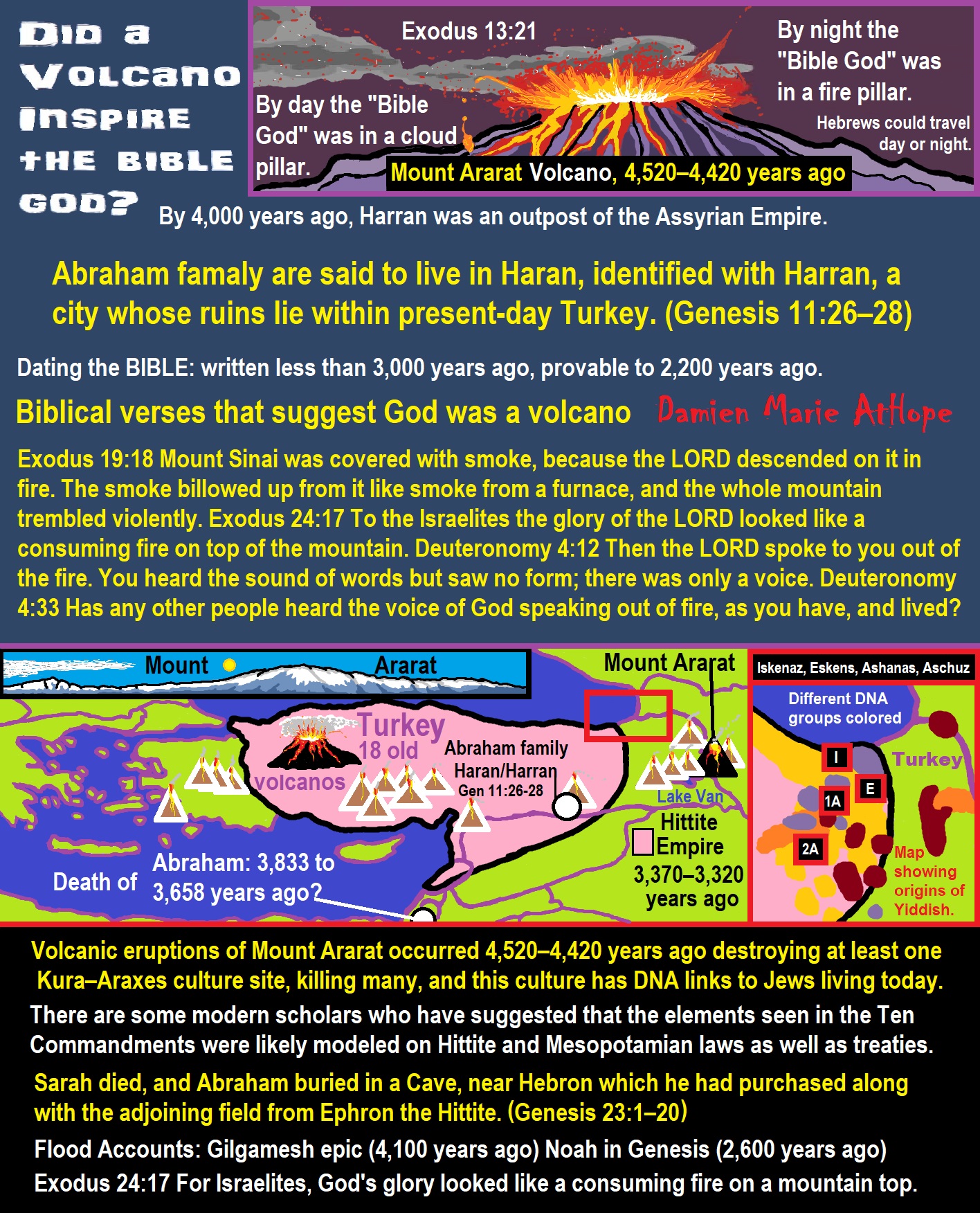
ref, ref, ref, ref, ref, ref, ref, ref, ref, ref, ref, ref, ref
By day the LORD went ahead of them in a pillar of cloud to guide them on their way and by night in a pillar of fire to give them light, so that they could travel by day or night.
- By day the “Bible God” was in a cloud pillar.
- By night the “Bible God” was in a fire pillar.
Did a 4,520–4,420-year-old Volcano In Turkey Inspire the Bible God?

Deuteronomy 32:8-9: This biblical passage provides evidence of the El (supreme god of East Semitic speakers 2900-2350 BCE, god EL who is used around 250 times in the early bible) as the father of Yahweh (ancient Semitic deity god of the bible, national god of the kingdoms of Judah and Israel). It describes how El Elyon (God Most High) divided the nations among his sons, with Yahweh receiving Israel as his portion.
El was a semedic god, but Yahweh did not start as a semedic god, to me. He was later added to the Hebrew religion, replacing the El god. Also, god El started before the culture that called itself Hebrew/Israelites/Jews. And was then made their “God” as they separated from other Canaanites who lived in the Levant, modern-day Israel, Palestine, Lebanon, and parts of Syria and Jordan, during the Bronze Age.
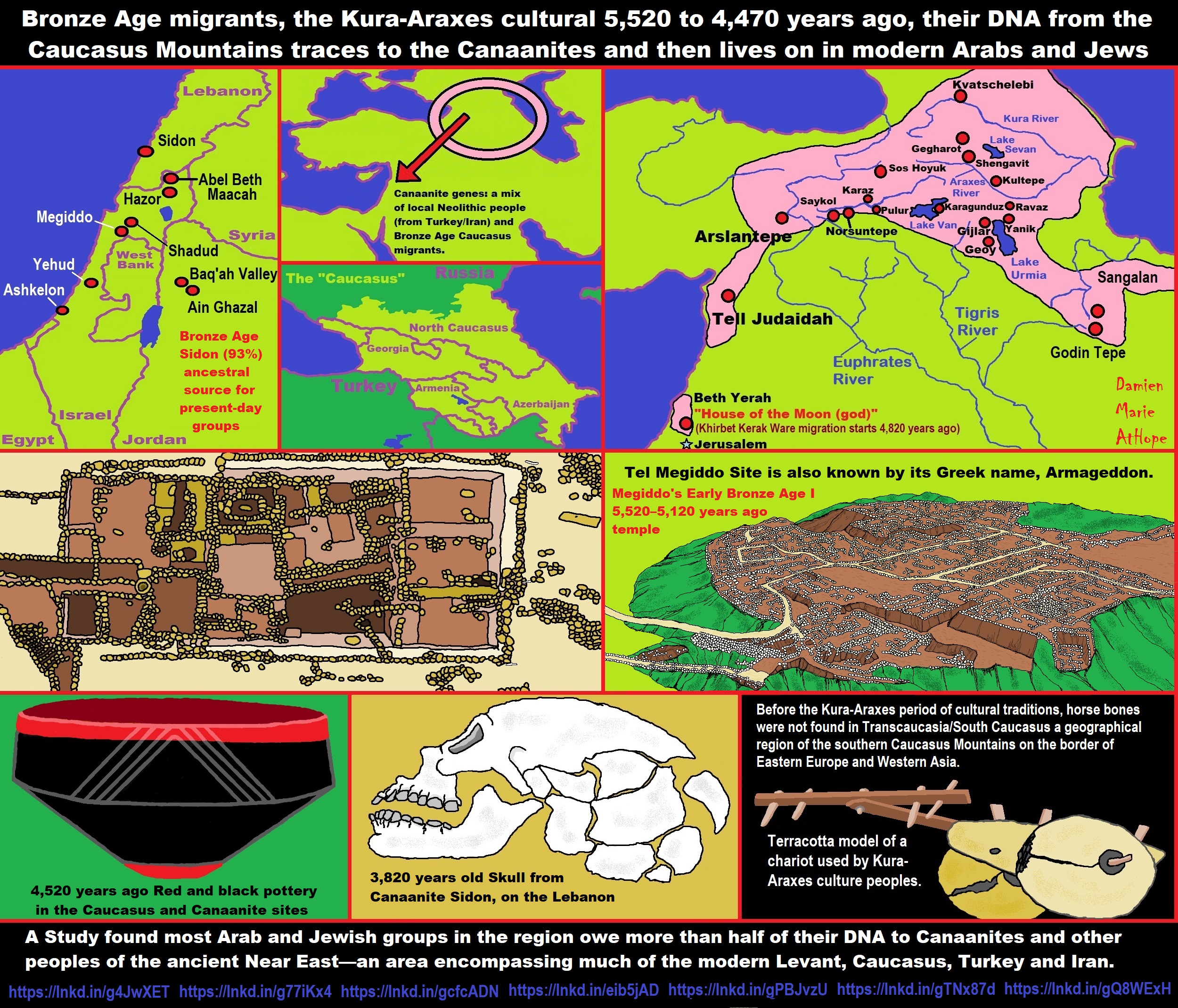
Kura-Araxes Cultural 5,520 to 4,470 years old DNA traces to the Canaanites, Arabs, and Jews
Bronze Age migrants, the Kura-Araxes cultural 5,520 to 4,470 years ago, their DNA from the Caucasus Mountains traces to the Canaanites and then lives on in modern Arabs and Jews. A Study found most Arab and Jewish groups in the region owe more than half of their DNA to Canaanites and other peoples of the ancient Near East—an area encompassing much of the modern Levant, Caucasus, Turkey, and Iran. Before the Kura-Araxes period of cultural traditions, horse bones were not found in Transcaucasia/South Caucasus a geographical region of the southern Caucasus Mountains on the border of Eastern Europe and Western Asia.
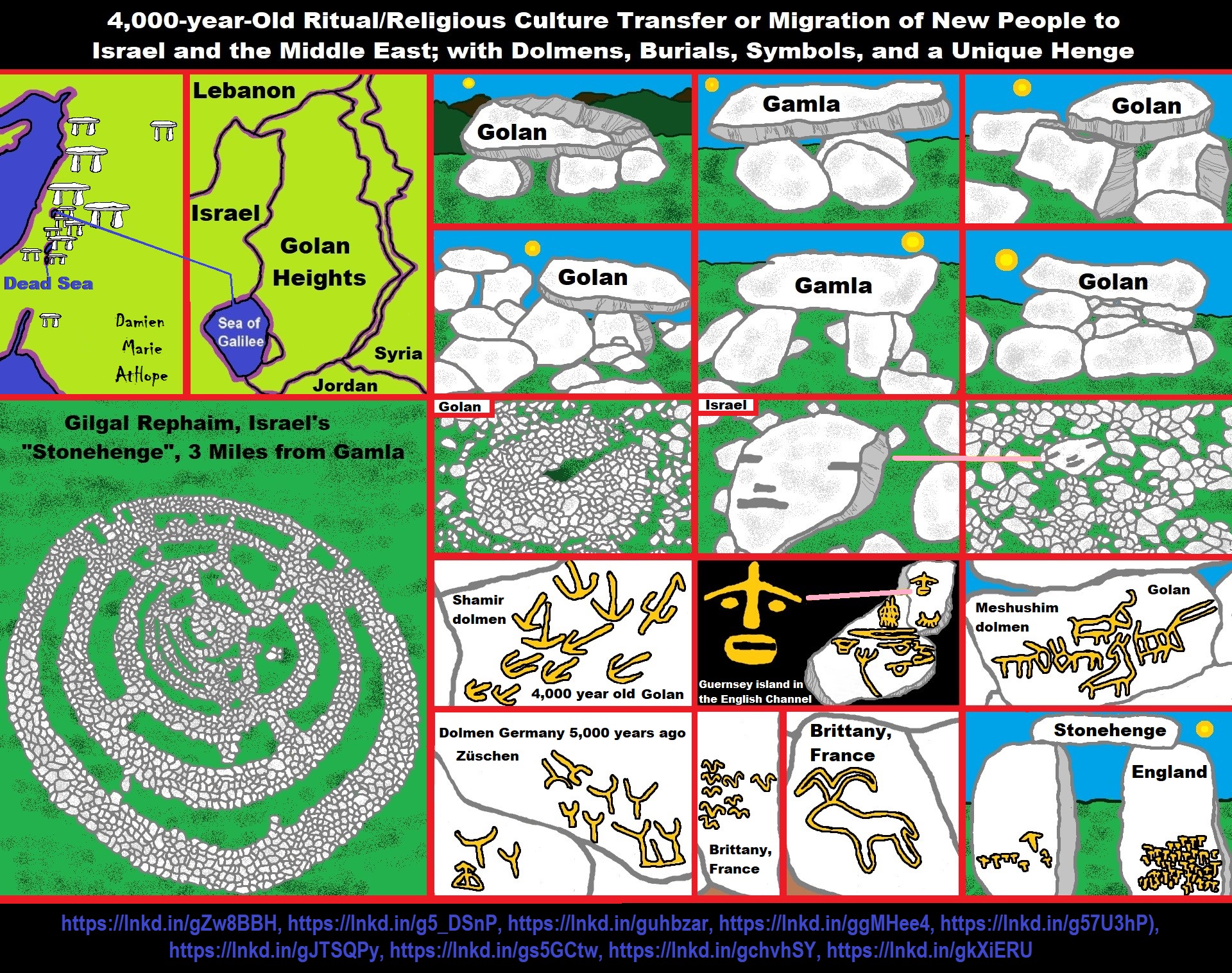
“The presence of dolmens are found in a few areas of Israel, with most dolmens known to the public found in the Golan Heights. Gamla is part of the Golan
4,000-year-Old Dolmens in Israel: A Connected Dolmen Religious Phenomenon?
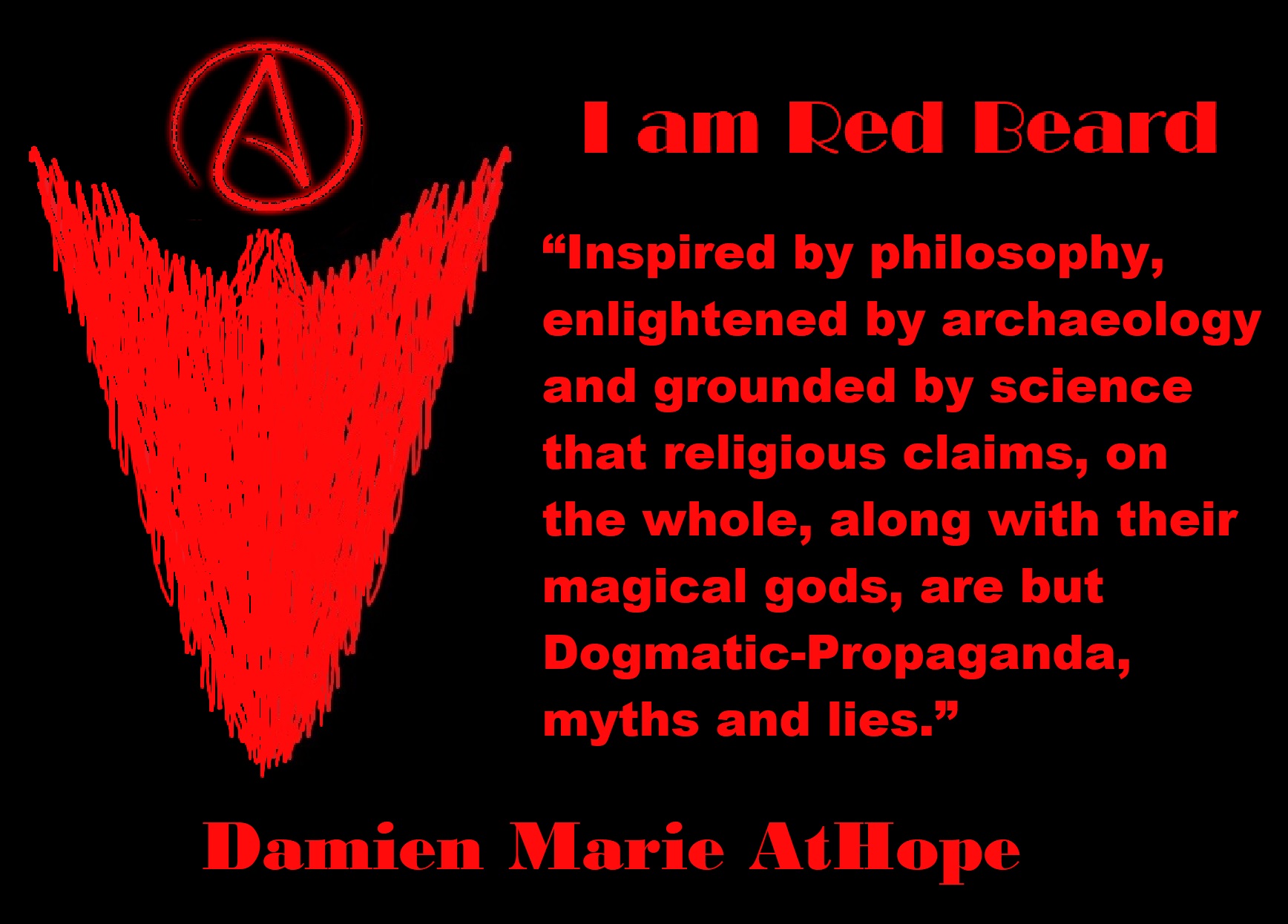
People don’t commonly teach religious history, even that of their own claimed religion. No, rather they teach a limited “pro their religion” history of their religion from a religious perspective favorable to the religion of choice.

Do you truly think “Religious Belief” is only a matter of some personal choice?
Do you not see how coercive one’s world of choice is limited to the obvious hereditary belief, in most religious choices available to the child of religious parents or caregivers? Religion is more commonly like a family, culture, society, etc. available belief that limits the belief choices of the child and that is when “Religious Belief” is not only a matter of some personal choice and when it becomes hereditary faith, not because of the quality of its alleged facts or proposed truths but because everyone else important to the child believes similarly so they do as well simply mimicking authority beliefs handed to them. Because children are raised in religion rather than being presented all possible choices but rather one limited dogmatic brand of “Religious Belief” where children only have a choice of following the belief as instructed, and then personally claim the faith hereditary belief seen in the confirming to the belief they have held themselves all their lives. This is obvious in statements asked and answered by children claiming a faith they barely understand but they do understand that their family believes “this or that” faith, so they feel obligated to believe it too. While I do agree that “Religious Belief” should only be a matter of some personal choice, it rarely is… End Hereditary Religion!
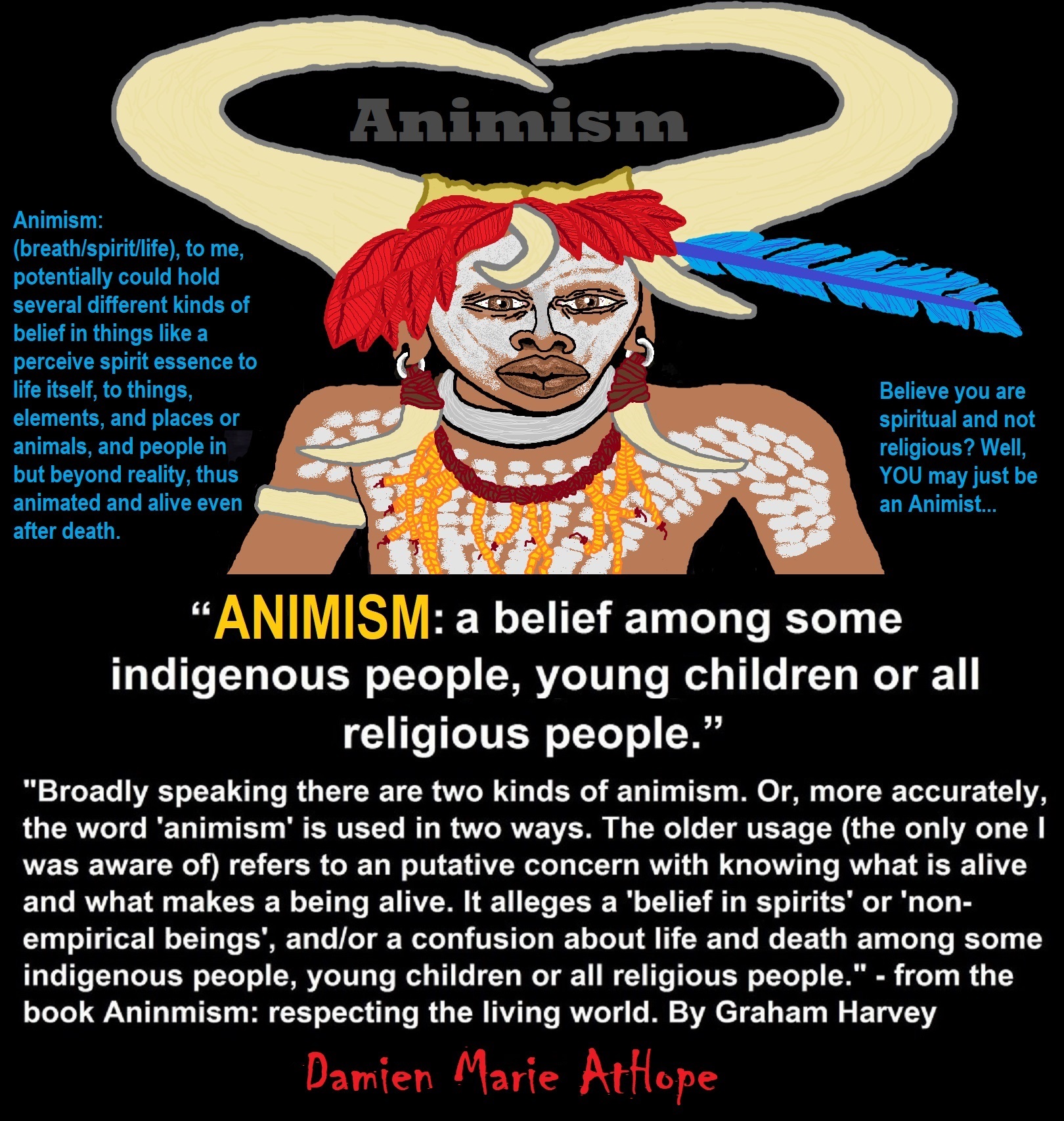
Animism: Respecting the Living World by Graham Harvey
“How have human cultures engaged with and thought about animals, plants, rocks, clouds, and other elements in their natural surroundings? Do animals and other natural objects have a spirit or soul? What is their relationship to humans? In this new study, Graham Harvey explores current and past animistic beliefs and practices of Native Americans, Maori, Aboriginal Australians, and eco-pagans. He considers the varieties of animism found in these cultures as well as their shared desire to live respectfully within larger natural communities. Drawing on his extensive casework, Harvey also considers the linguistic, performative, ecological, and activist implications of these different animisms.” ref
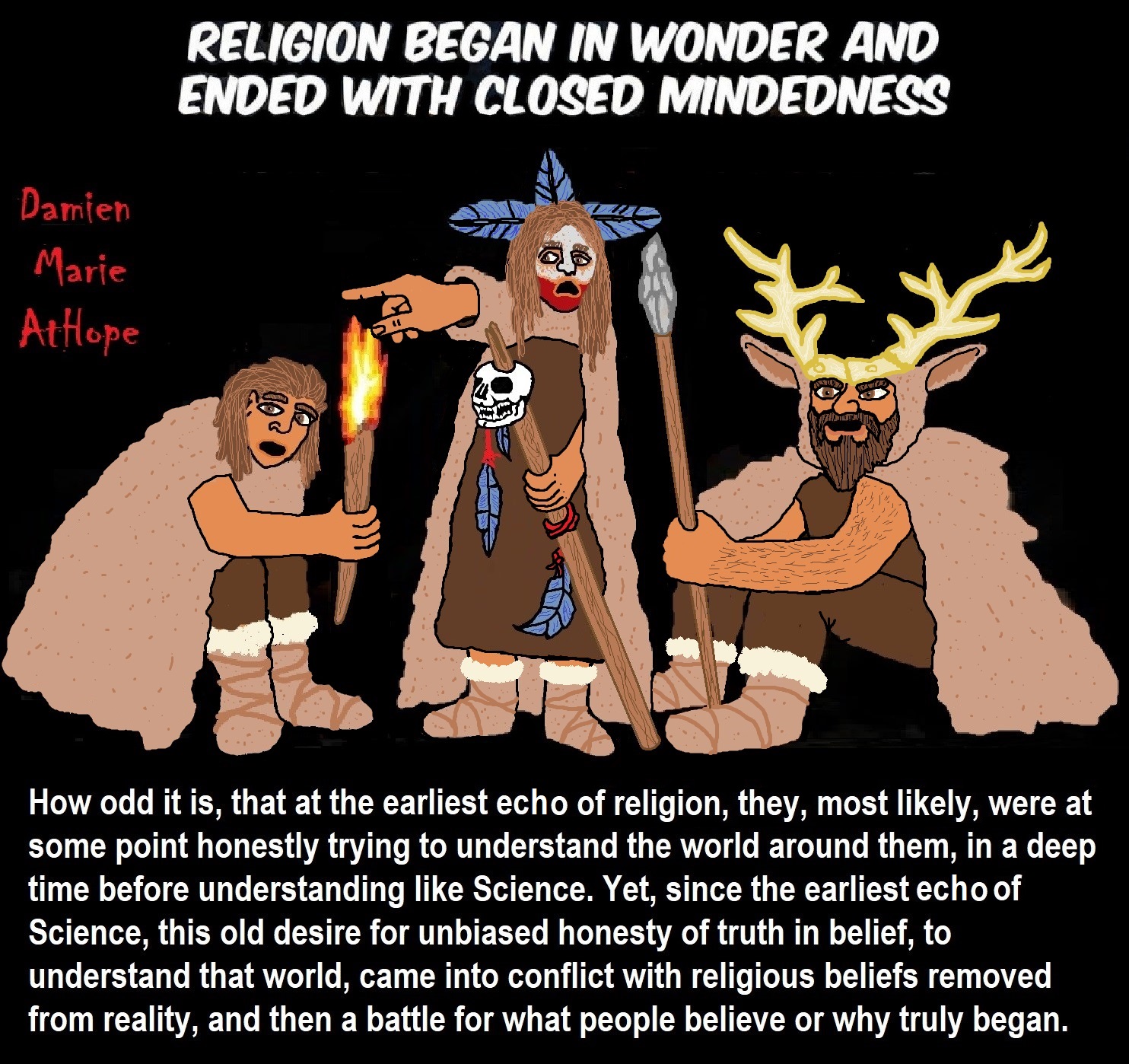
We are like believing machines we vacuum up ideas, like Velcro sticks to almost everything. We accumulate beliefs that we allow to negatively influence our lives, often without realizing it. Our willingness must be to alter skewed beliefs that impend our balance or reason, which allows us to achieve new positive thinking and accurate outcomes.
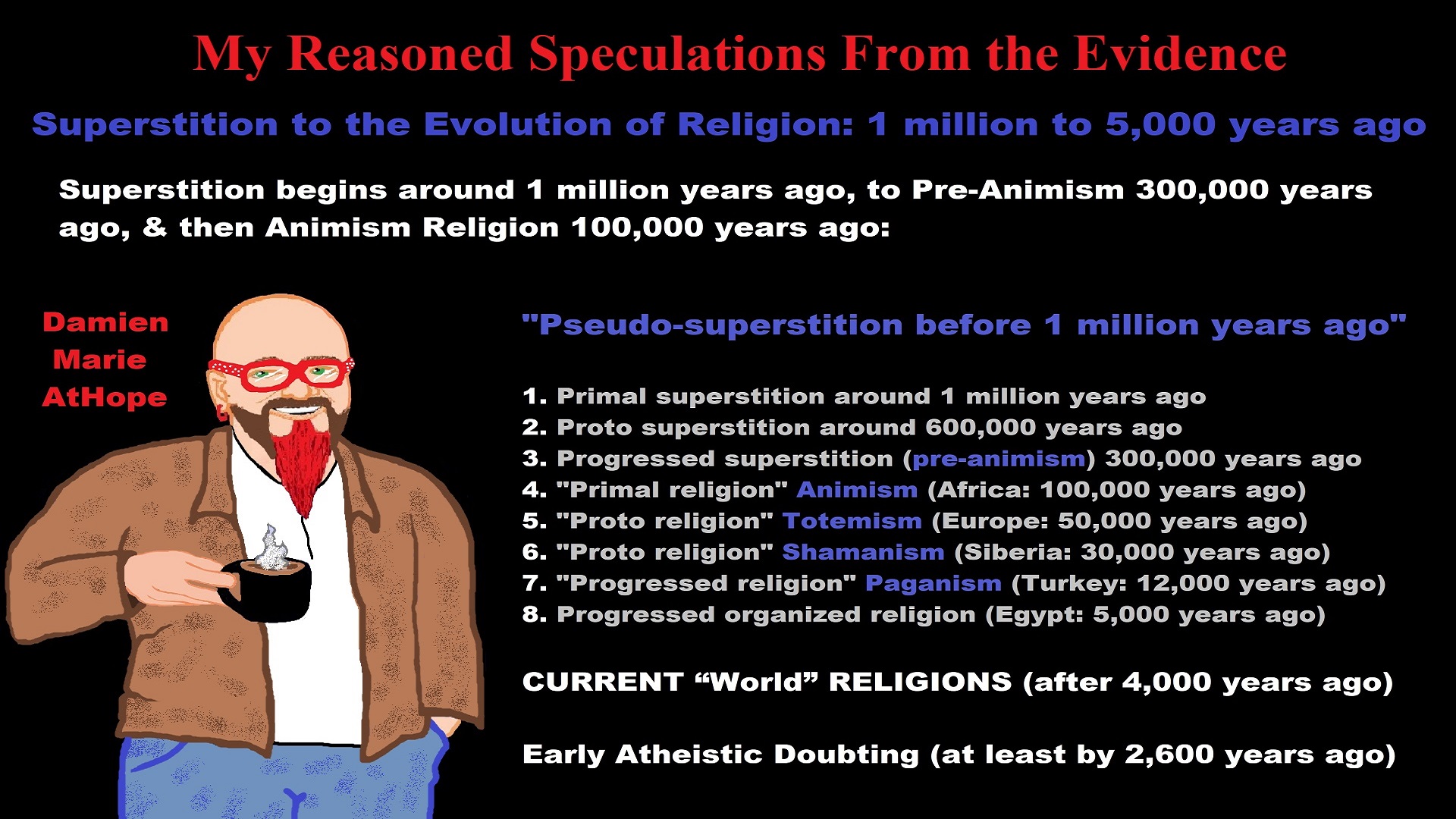
My thoughts on Religion Evolution with external links for more info:
- (Pre-Animism Africa mainly, but also Europe, and Asia at least 300,000 years ago), (Pre-Animism – Oxford Dictionaries)
- (Animism Africa around 100,000 years ago), (Animism – Britannica.com)
- (Totemism Europe around 50,000 years ago), (Totemism – Anthropology)
- (Shamanism Siberia around 30,000 years ago), (Shamanism – Britannica.com)
- (Paganism Turkey around 12,000 years ago), (Paganism – BBC Religion)
- (Progressed Organized Religion “Institutional Religion” Egypt around 5,000 years ago), (Ancient Egyptian Religion – Britannica.com)
- (CURRENT “World” RELIGIONS after 4,000 years ago) (Origin of Major Religions – Sacred Texts)
- (Early Atheistic Doubting at least by 2,600 years ago) (History of Atheism – Wikipedia)
“Religion is an Evolved Product” and Yes, Religion is Like Fear Given Wings…
Atheists talk about gods and religions for the same reason doctors talk about cancer, they are looking for a cure, or a firefighter talks about fires because they burn people and they care to stop them. We atheists too often feel a need to help the victims of mental slavery, held in the bondage that is the false beliefs of gods and the conspiracy theories of reality found in religions.
Understanding Religion Evolution:
- Pre-Animism (at least 300,000 years ago)
- Animism (Africa: 100,000 years ago)
- Totemism (Europe: 50,000 years ago)
- Shamanism (Siberia: 30,000 years ago)
- Paganism (Turkey: 12,000 years ago)
- Progressed organized religion (Egypt: 5,000 years ago), (Egypt, the First Dynasty 5,150 years ago)
- CURRENT “World” RELIGIONS (after 4,000 years ago)
- Early Atheistic Doubting (at least by 2,600 years ago)
“An Archaeological/Anthropological Understanding of Religion Evolution”
It seems ancient peoples had to survived amazing threats in a “dangerous universe (by superstition perceived as good and evil),” and human “immorality or imperfection of the soul” which was thought to affect the still living, leading to ancestor worship. This ancestor worship presumably led to the belief in supernatural beings, and then some of these were turned into the belief in gods. This feeble myth called gods were just a human conceived “made from nothing into something over and over, changing, again and again, taking on more as they evolve, all the while they are thought to be special,” but it is just supernatural animistic spirit-belief perceived as sacred.
Quick Evolution of Religion?
Pre-Animism (at least 300,000 years ago) pre-religion is a beginning that evolves into later Animism. So, Religion as we think of it, to me, all starts in a general way with Animism (Africa: 100,000 years ago) (theoretical belief in supernatural powers/spirits), then this is physically expressed in or with Totemism (Europe: 50,000 years ago) (theoretical belief in mythical relationship with powers/spirits through a totem item), which then enlists a full-time specific person to do this worship and believed interacting Shamanism (Siberia/Russia: 30,000 years ago) (theoretical belief in access and influence with spirits through ritual), and then there is the further employment of myths and gods added to all the above giving you Paganism (Turkey: 12,000 years ago) (often a lot more nature-based than most current top world religions, thus hinting to their close link to more ancient religious thinking it stems from). My hypothesis is expressed with an explanation of the building of a theatrical house (modern religions development). Progressed organized religion (Egypt: 5,000 years ago) with CURRENT “World” RELIGIONS (after 4,000 years ago).
Historically, in large city-state societies (such as Egypt or Iraq) starting around 5,000 years ago culminated to make religion something kind of new, a sociocultural-governmental-religious monarchy, where all or at least many of the people of such large city-state societies seem familiar with and committed to the existence of “religion” as the integrated life identity package of control dynamics with a fixed closed magical doctrine, but this juggernaut integrated religion identity package of Dogmatic-Propaganda certainly did not exist or if developed to an extent it was highly limited in most smaller prehistoric societies as they seem to lack most of the strong control dynamics with a fixed closed magical doctrine (magical beliefs could be at times be added or removed). Many people just want to see developed religious dynamics everywhere even if it is not. Instead, all that is found is largely fragments until the domestication of religion.
Religions, as we think of them today, are a new fad, even if they go back to around 6,000 years in the timeline of human existence, this amounts to almost nothing when seen in the long slow evolution of religion at least around 70,000 years ago with one of the oldest ritual worship. Stone Snake of South Africa: “first human worship” 70,000 years ago. This message of how religion and gods among them are clearly a man-made thing that was developed slowly as it was invented and then implemented peace by peace discrediting them all. Which seems to be a simple point some are just not grasping how devastating to any claims of truth when we can see the lie clearly in the archeological sites.
I wish people fought as hard for the actual values as they fight for the group/clan names political or otherwise they think support values. Every amount spent on war is theft to children in need of food or the homeless kept from shelter.
Here are several of my blog posts on history:
- To Find Truth You Must First Look
- (Magdalenian/Iberomaurusian) Connections to the First Paganists of the early Neolithic Near East Dating from around 17,000 to 12,000 Years Ago
- Natufians: an Ancient People at the Origins of Agriculture and Sedentary Life
- Possible Clan Leader/Special “MALE” Ancestor Totem Poles At Least 13,500 years ago?
- Jewish People with DNA at least 13,200 years old, Judaism, and the Origins of Some of its Ideas
- Baltic Reindeer Hunters: Swiderian, Lyngby, Ahrensburgian, and Krasnosillya cultures 12,020 to 11,020 years ago are evidence of powerful migratory waves during the last 13,000 years and a genetic link to Saami and the Finno-Ugric peoples.
- The Rise of Inequality: patriarchy and state hierarchy inequality
- Fertile Crescent 12,500 – 9,500 Years Ago: fertility and death cult belief system?
- 12,400 – 11,700 Years Ago – Kortik Tepe (Turkey) Pre/early-Agriculture Cultic Ritualism
- Ritualistic Bird Symbolism at Gobekli Tepe and its “Ancestor Cult”
- Male-Homosexual (female-like) / Trans-woman (female) Seated Figurine from Gobekli Tepe
- Could a 12,000-year-old Bull Geoglyph at Göbekli Tepe relate to older Bull and Female Art 25,000 years ago and Later Goddess and the Bull cults like Catal Huyuk?
- Sedentism and the Creation of goddesses around 12,000 years ago as well as male gods after 7,000 years ago.
- Alcohol, where Agriculture and Religion Become one? Such as Gobekli Tepe’s Ritualistic use of Grain as Food and Ritual Drink
- Neolithic Ritual Sites with T-Pillars and other Cultic Pillars
- Paganism: Goddesses around 12,000 years ago then Male Gods after 7,000 years ago
- First Patriarchy: Split of Women’s Status around 12,000 years ago & First Hierarchy: fall of Women’s Status around 5,000 years ago.
- Natufians: an Ancient People at the Origins of Agriculture and Sedentary Life
- J DNA and the Spread of Agricultural Religion (paganism)
- Paganism: an approximately 12,000-year-old belief system
- Paganism 12,000 years old: related to “Anarchism and Socialism” (Pre-Capitalism)
- Shaman burial in Israel 12,000 years ago and the Shamanism Phenomena
- Need to Mythicized: gods and goddesses
- 12,000 – 7,000 Years Ago – Paleo-Indian Culture (The Americas)
- 12,000 – 2,000 Years Ago – Indigenous-Scandinavians (Nordic)
- Norse did not wear helmets with horns?
- Pre-Pottery Neolithic Skull Cult around 11,500 to 8,400 Years Ago?
- 10,400 – 10,100 Years Ago, in Turkey the Nevail Cori Religious Settlement
- 9,000-6,500 Years Old Submerged Pre-Pottery/Pottery Neolithic Ritual Settlements off Israel’s Coast
- Catal Huyuk “first religious designed city” around 9,500 to 7,700 years ago (Turkey)
- Cultic Hunting at Catal Huyuk “first religious designed city”
- Special Items and Art as well as Special Elite Burials at Catal Huyuk
- New Rituals and Violence with the appearance of Pottery and People?
- Haplogroup N and its related Uralic Languages and Cultures
- Ainu people, Sámi people, Native Americans, the Ancient North Eurasians, and Paganistic-Shamanism with Totemism
- Ideas, Technology and People from Turkey, Europe, to China and Back again 9,000 to 5,000 years ago?
- First Pottery of Europe and the Related Cultures
- 9,000 years old Neolithic Artifacts Judean Desert and Hills Israel
- 9,000-7,000 years-old Sex and Death Rituals: Cult Sites in Israel, Jordan, and the Sinai
- 9,000-8500 year old Horned Female shaman Bad Dürrenberg Germany
- Neolithic Jewelry and the Spread of Farming in Europe Emerging out of West Turkey
- 8,600-year-old Tortoise Shells in Neolithic graves in central China have Early Writing and Shamanism
- Swing of the Mace: the rise of Elite, Forced Authority, and Inequality begin to Emerge 8,500 years ago?
- Migrations and Changing Europeans Beginning around 8,000 Years Ago
- My “Steppe-Anatolian-Kurgan hypothesis” 8,000/7,000 years ago
- Around 8,000-year-old Shared Idea of the Mistress of Animals, “Ritual” Motif
- Pre-Columbian Red-Paint (red ochre) Maritime Archaic Culture 8,000-3,000 years ago
- 7,522-6,522 years ago Linear Pottery culture which I think relates to Arcane Capitalism’s origins
- Arcane Capitalism: Primitive socialism, Primitive capital, Private ownership, Means of production, Market capitalism, Class discrimination, and Petite bourgeoisie (smaller capitalists)
- 7,500-4,750 years old Ritualistic Cucuteni-Trypillian culture of Moldova, Romania, and Ukraine
- Roots of a changing early society 7,200-6,700 years ago Jordan and Israel
- Agriculture religion (Paganism) with farming reached Britain between about 7,000 to 6,500 or so years ago and seemingly expressed in things like Western Europe’s Long Barrows
- My Thoughts on Possible Migrations of “R” DNA and Proto-Indo-European?
- “Millet” Spreading from China 7,022 years ago to Europe and related Language may have Spread with it leading to Proto-Indo-European
- Proto-Indo-European (PIE), ancestor of Indo-European languages: DNA, Society, Language, and Mythology
- The Dnieper–Donets culture and Asian varieties of Millet from China to the Black Sea region of Europe by 7,022 years ago
- Kurgan 6,000 years ago/dolmens 7,000 years ago: funeral, ritual, and other?
- 7,020 to 6,020-year-old Proto-Indo-European Homeland of Urheimat or proposed home of their Language and Religion
- Ancient Megaliths: Kurgan, Ziggurat, Pyramid, Menhir, Trilithon, Dolman, Kromlech, and Kromlech of Trilithons
- The Mytheme of Ancient North Eurasian Sacred-Dog belief and similar motifs are found in Indo-European, Native American, and Siberian comparative mythology
- Elite Power Accumulation: Ancient Trade, Tokens, Writing, Wealth, Merchants, and Priest-Kings
- Sacred Mounds, Mountains, Kurgans, and Pyramids may hold deep connections?
- Between 7,000-5,000 Years ago, rise of unequal hierarchy elite, leading to a “birth of the State” or worship of power, strong new sexism, oppression of non-elites, and the fall of Women’s equal status
- Paganism 7,000-5,000 years old: related to “Anarchism and Socialism” (Capitalism) (World War 0) Elite & their slaves
- Hell and Underworld mythologies starting maybe as far back as 7,000 to 5,000 years ago with the Proto-Indo-Europeans?
- The First Expression of the Male God around 7,000 years ago?
- White (light complexion skin) Bigotry and Sexism started 7,000 years ago?
- Around 7,000-year-old Shared Idea of the Divine Bird (Tutelary and/or Trickster spirit/deity), “Ritual” Motif
- Nekhbet an Ancient Egyptian Vulture Goddess and Tutelary Deity
- 6,720 to 4,920 years old Ritualistic Hongshan Culture of Inner Mongolia with 5,000-year-old Pyramid Mounds and Temples
- First proto-king in the Balkans, Varna culture around 6,500 years ago?
- 6,500–5,800 years ago in Israel Late Chalcolithic (Copper Age) Period in the Southern Levant Seems to Express Northern Levant Migrations, Cultural and Religious Transfer
- KING OF BEASTS: Master of Animals “Ritual” Motif, around 6,000 years old or older…
- Around 6000-year-old Shared Idea of the Solid Wheel & the Spoked Wheel-Shaped Ritual Motif
- “The Ghassulian Star,” a mysterious 6,000-year-old mural from Jordan; a Proto-Star of Ishtar, Star of Inanna or Star of Venus?
- Religious/Ritual Ideas, including goddesses and gods as well as ritual mounds or pyramids from Northeastern Asia at least 6,000 years old, seemingly filtering to Iran, Iraq, the Mediterranean, Europe, Egypt, and the Americas?
- Maykop (5,720–5,020 years ago) Caucasus region Bronze Age culture-related to Copper Age farmers from the south, influenced by the Ubaid period and Leyla-Tepe culture, as well as influencing the Kura-Araxes culture
- 5-600-year-old Tomb, Mummy, and First Bearded Male Figurine in a Grave
- Kura-Araxes Cultural 5,520 to 4,470 years old DNA traces to the Canaanites, Arabs, and Jews
- Minoan/Cretan (Keftiu) Civilization and Religion around 5,520 to 3,120 years ago
- Evolution Of Science at least by 5,500 years ago
- 5,500 Years old birth of the State, the rise of Hierarchy, and the fall of Women’s status
- “Jiroft culture” 5,100 – 4,200 years ago and the History of Iran
- Stonehenge: Paganistic Burial and Astrological Ritual Complex, England (5,100-3,600 years ago)
- Around 5,000-year-old Shared Idea of the “Tree of Life” Ritual Motif
- Complex rituals for elite, seen from China to Egypt, at least by 5,000 years ago
- Around 5,000 years ago: “Birth of the State” where Religion gets Military Power and Influence
- The Center of the World “Axis Mundi” and/or “Sacred Mountains” Mythology Could Relate to the Altai Mountains, Heart of the Steppe
- Progressed organized religion starts, an approximately 5,000-year-old belief system
- China’s Civilization between 5,000-3,000 years ago, was a time of war and class struggle, violent transition from free clans to a Slave or Elite society
- Origin of Logics is Naturalistic Observation at least by around 5,000 years ago.
- Paganism 5,000 years old: progressed organized religion and the state: related to “Anarchism and Socialism” (Kings and the Rise of the State)
- Ziggurats (multi-platform temples: 4,900 years old) to Pyramids (multi-platform tombs: 4,700 years old)
- Did a 4,520–4,420-year-old Volcano In Turkey Inspire the Bible God?
- Finland’s Horned Shaman and Pre-Horned-God at least 4,500 years ago?
- 4,000-year-Old Dolmens in Israel: A Connected Dolmen Religious Phenomenon?
- Creation myths: From chaos, Ex nihilo, Earth-diver, Emergence, World egg, and World parent
- Bronze Age “Ritual” connections of the Bell Beaker culture with the Corded Ware/Single Grave culture, which were related to the Yamnaya culture and Proto-Indo-European Languages/Religions
- Low Gods (Earth/ Tutelary deity), High Gods (Sky/Supreme deity), and Moralistic Gods (Deity enforcement/divine order)
- The exchange of people, ideas, and material-culture including, to me, the new god (Sky Father) and goddess (Earth Mother) religion between the Cucuteni-Trypillians and others which is then spread far and wide
- Koryaks: Indigenous People of the Russian Far East and Big Raven myths also found in Tlingit, Haida, Tsimshian, and other Indigenous People of North America
- 42 Principles Of Maat (Egyptian Goddess of the justice) around 4,400 years ago, 2000 Years Before Ten Commandments
- “Happy Easter” Well Happy Eostre/Ishter
- 4,320-3,820 years old “Shimao” (North China) site with Totemistic-Shamanistic Paganism and a Stepped Pyramid
- 4,250 to 3,400 Year old Stonehenge from Russia: Arkaim?
- 4,100-year-old beaker with medicinal & flowering plants in a grave of a woman in Scotland
- Early European Farmer ancestry, Kelif el Boroud people with the Cardial Ware culture, and the Bell Beaker culture Paganists too, spread into North Africa, then to the Canary Islands off West Africa
- Flood Accounts: Gilgamesh epic (4,100 years ago) Noah in Genesis (2,600 years ago)
- Paganism 4,000 years old: related to “Anarchism and Socialism” (First Moralistic gods, then the Origin time of Monotheism)
- When was the beginning: TIMELINE OF CURRENT RELIGIONS, which start around 4,000 years ago.
- Early Religions Thought to Express Proto-Monotheistic Systems around 4,000 years ago
- Kultepe? An archaeological site with a 4,000 years old women’s rights document.
- Single God Religions (Monotheism) = “Man-o-theism” started around 4,000 years ago with the Great Sky Spirit/God Tiān (天)?
- Confucianism’s Tiān (Shangdi god 4,000 years old): Supernaturalism, Pantheism or Theism?
- Yes, Your Male God is Ridiculous
- Mythology, a Lunar Deity is a Goddess or God of the Moon
- Sacred Land, Hills, and Mountains: Sami Mythology (Paganistic Shamanism)
- Horse Worship/Sacrifice: mythical union of Ruling Elite/Kingship and the Horse
- The Amorite/Amurru people’s God Amurru “Lord of the Steppe”, relates to the Origins of the Bible God?
- Bronze Age Exotic Trade Routes Spread Quite Far as well as Spread Religious Ideas with Them
- Sami and the Northern Indigenous Peoples Landscape, Language, and its Connection to Religion
- Prototype of Ancient Analemmatic Sundials around 3,900-3,150 years ago and a Possible Solar Connection to gods?
- Judaism is around 3,450 or 3,250 years old. (“Paleo-Hebrew” 3,000 years ago and Torah 2,500 years ago)
- The Weakening of Ancient Trade and the Strengthening of Religions around 3000 years ago?
- Are you aware that there are religions that worship women gods, explain now religion tears women down?
- Animistic, Totemistic, and Paganistic Superstition Origins of bible god and the bible’s Religion.
- Myths and Folklore: “Trickster gods and goddesses”
- Jews, Judaism, and the Origins of Some of its Ideas
- An Old Branch of Religion Still Giving Fruit: Sacred Trees
- Dating the BIBLE: naming names and telling times (written less than 3,000 years ago, provable to 2,200 years ago)
- Did a Volcano Inspire the bible god?
- Dené–Yeniseian language, Old Copper Complex, and Pre-Columbian Mound Builders?
- No “dinosaurs and humans didn’t exist together just because some think they are in the bible itself”
- Sacred Shit and Sacred Animals?
- Everyone Killed in the Bible Flood? “Nephilim” (giants)?
- Hey, Damien dude, I have a question for you regarding “the bible” Exodus.
- Archaeology Disproves the Bible
- Bible Battle, Just More, Bible Babble
- The Jericho Conquest lie?
- Canaanites and Israelites?
- Accurate Account on how did Christianity Began?
- Let’s talk about Christianity.
- So the 10 commandments isn’t anything to go by either right?
- Misinformed christian
- Debunking Jesus?
- Paulism vs Jesus
- Ok, you seem confused so let’s talk about Buddhism.
- Unacknowledged Buddhism: Gods, Savior, Demons, Rebirth, Heavens, Hells, and Terrorism
- His Foolishness The Dalai Lama
- Yin and Yang is sexist with an ORIGIN around 2,300 years ago?
- I Believe Archaeology, not Myths & Why Not, as the Religious Myths Already Violate Reason!
- Archaeological, Scientific, & Philosophic evidence shows the god myth is man-made nonsense.
- Aquatic Ape Theory/Hypothesis? As Always, Just Pseudoscience.
- Ancient Aliens Conspiracy Theorists are Pseudohistorians
- The Pseudohistoric and Pseudoscientific claims about “Bakoni Ruins” of South Africa
- Why do people think Religion is much more than supernaturalism and superstitionism?
- Religion is an Evolved Product
- Was the Value of Ancient Women Different?
- 1000 to 1100 CE, human sacrifice Cahokia Mounds a pre-Columbian Native American site
- Feminist atheists as far back as the 1800s?
- Promoting Religion as Real is Mentally Harmful to a Flourishing Humanity
- Screw All Religions and Their Toxic lies, they are all fraud
- Forget Religions’ Unfounded Myths, I Have Substantiated “Archaeology Facts.”
- Religion Dispersal throughout the World
- I Hate Religion Just as I Hate all Pseudoscience
- Exposing Scientology, Eckankar, Wicca and Other Nonsense?
- Main deity or religious belief systems
- Quit Trying to Invent Your God From the Scraps of Science.
- Archaeological, Scientific, & Philosophic evidence shows the god myth is man-made nonsense.
- Ancient Alien Conspiracy Theorists: Misunderstanding, Rhetoric, Misinformation, Fabrications, and Lies
- Misinformation, Distortion, and Pseudoscience in Talking with a Christian Creationist
- Judging the Lack of Goodness in Gods, Even the Norse God Odin
- Challenging the Belief in God-like Aliens and Gods in General
- A Challenge to Christian use of Torture Devices?
- Yes, Hinduism is a Religion
- Trump is One of the Most Reactionary Forces of Far-right Christian Extremism
- Was the Bull Head a Symbol of God? Yes!
- Primate Death Rituals
- Christian – “God and Christianity are objectively true”
- Australopithecus afarensis Death Ritual?
- You Claim Global Warming is a Hoax?
- Doubter of Science and Defamer of Atheists?
- I think that sounds like the Bible?
- History of the Antifa (“anti-fascist”) Movements
- Indianapolis Anti-Blasphemy Laws #Free Soheil Rally
- Damien, you repeat the golden rule in so many forms then you say religion is dogmatic?
- Science is a Trustable Methodology whereas Faith is not Trustable at all!
- Was I ever a believer, before I was an atheist?
- Atheists rise in reason
- Mistrust of science?
- Open to Talking About the Definition of ‘God’? But first, we address Faith.
- ‘United Monarchy’ full of splendor and power – Saul, David, and Solomon? Most likely not.
- Is there EXODUS ARCHAEOLOGY? The short answer is “no.”
- Lacking Proof of Bigfoots, Unicorns, and Gods is Just a Lack of Research?
- Religion and Politics: Faith Beliefs vs. Rational Thinking
- Hammer of Truth that lying pig RELIGION: challenged by an archaeologist
- “The Hammer of Truth” -ontology question- What do You Mean by That?
- Navigation of a bad argument: Ad Hominem vs. Attack
- Why is it Often Claimed that Gods have a Gender?
- Why are basically all monotheistic religions ones that have a male god?
- Shifting through the Claims in support of Faith
- Dear Mr. AtHope, The 20th Century is an Indictment of Secularism and a Failed Atheist Century
- An Understanding of the Worldwide Statistics and Dynamics of Terrorist Incidents and Suicide Attacks
- Intoxication and Evolution? Addressing and Assessing the “Stoned Ape” or “Drunken Monkey” Theories as Catalysts in Human Evolution
- Sacred Menstrual cloth? Inanna’s knot, Isis knot, and maybe Ma’at’s feather?
- Damien, why don’t the Hebrews accept the bible stories?
- Dealing with a Troll and Arguing Over Word Meaning
- Knowledge without Belief? Justified beliefs or disbeliefs worthy of Knowledge?
- Afrocentrism and African Religions
- Crecganford @crecganford offers history & stories of the people, places, gods, & culture
- Empiricism-Denier?
I am not an academic. I am a revolutionary that teaches in public, in places like social media, and in the streets. I am not a leader by some title given but from my commanding leadership style of simply to start teaching everywhere to everyone, all manner of positive education.
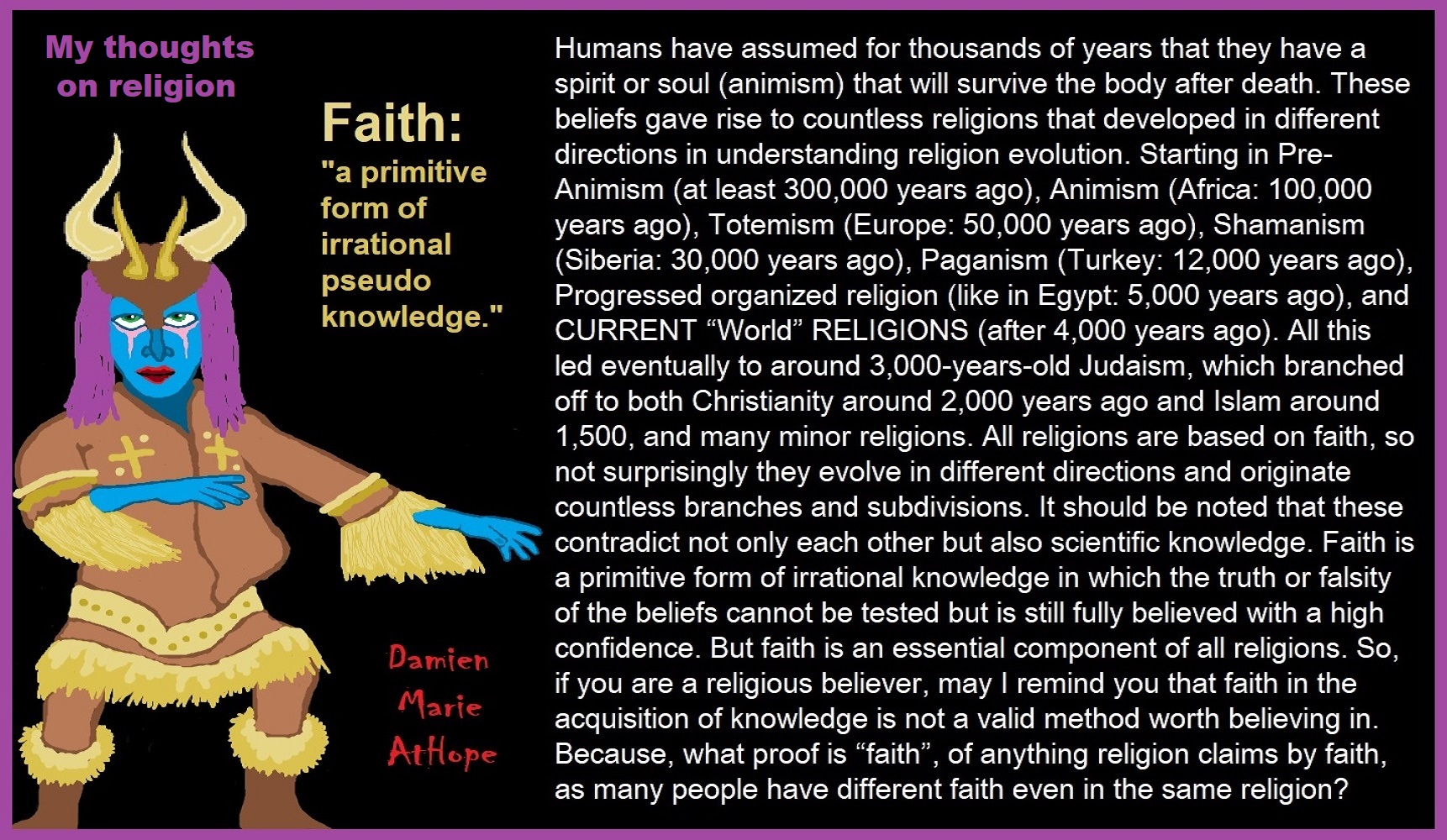
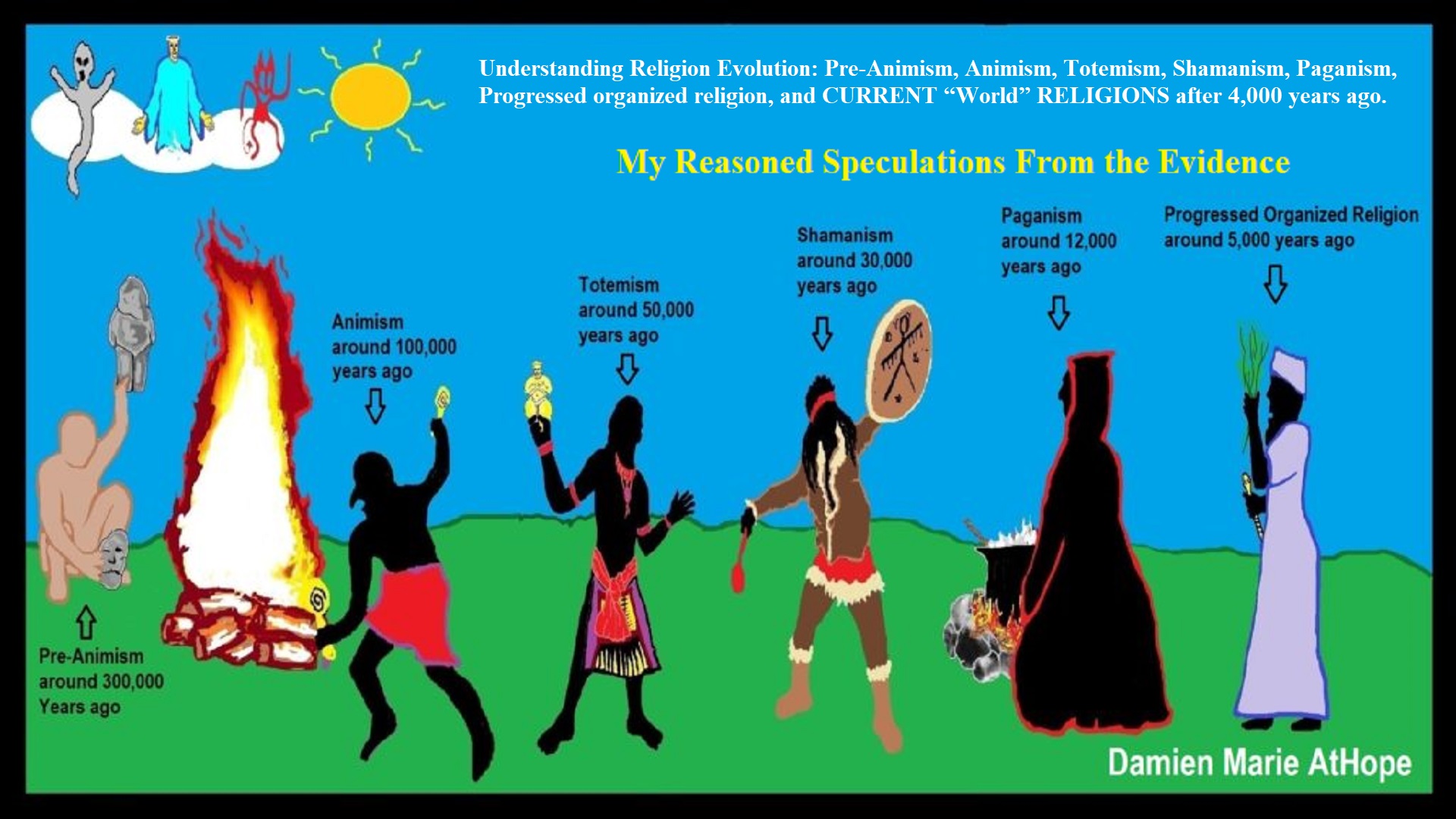
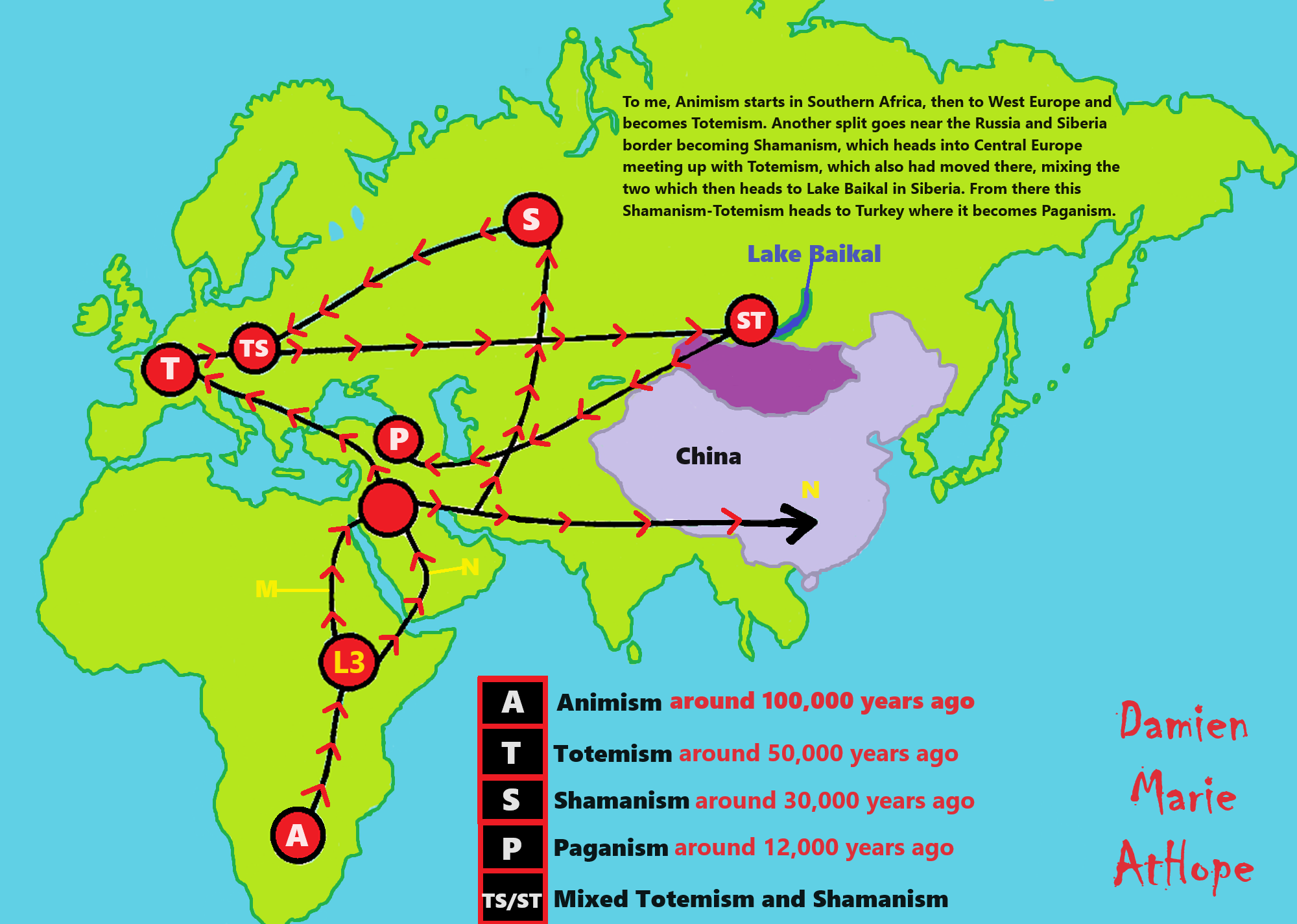
To me, Animism starts in Southern Africa, then to West Europe, and becomes Totemism. Another split goes near the Russia and Siberia border becoming Shamanism, which heads into Central Europe meeting up with Totemism, which also had moved there, mixing the two which then heads to Lake Baikal in Siberia. From there this Shamanism-Totemism heads to Turkey where it becomes Paganism.
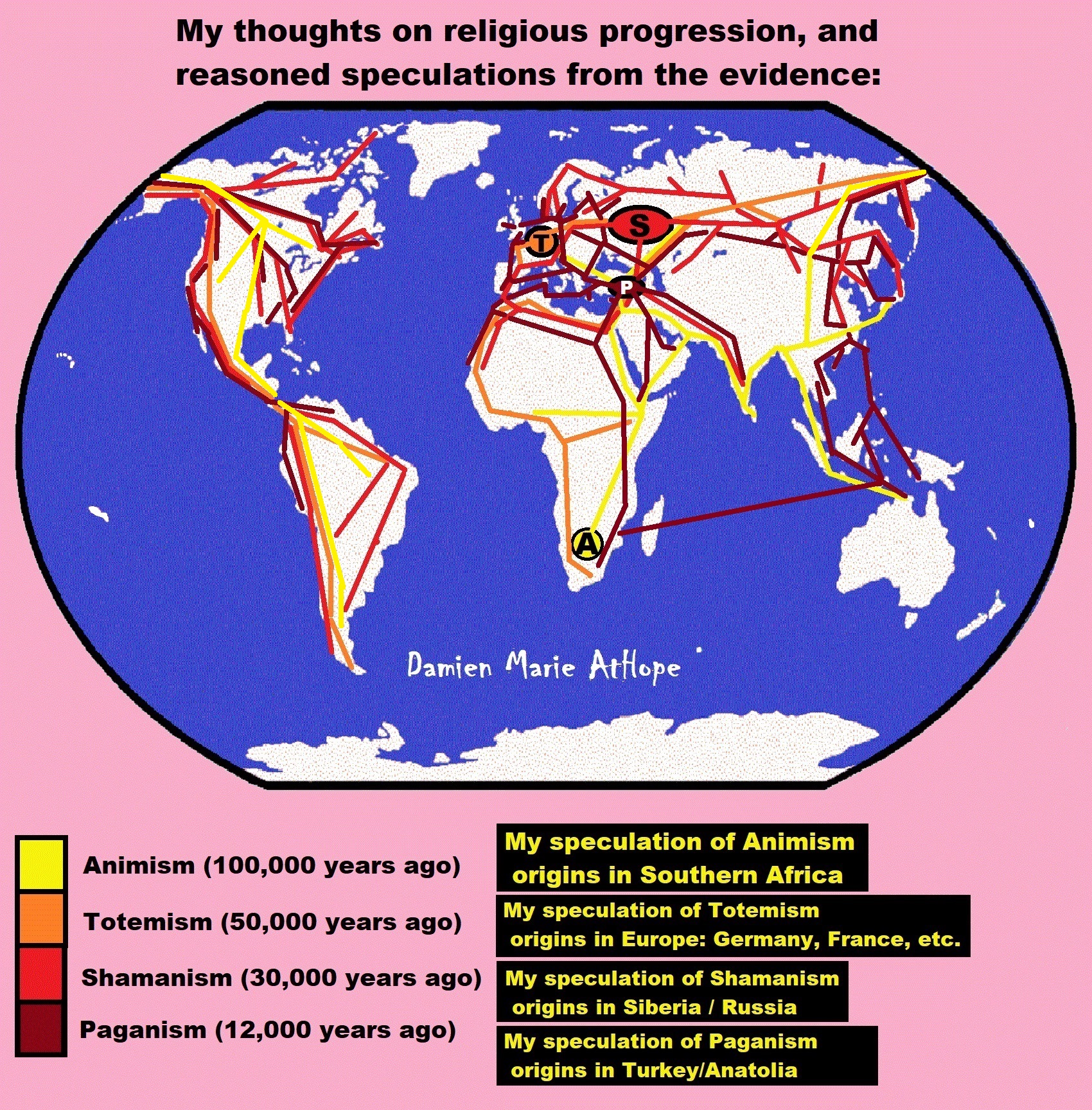
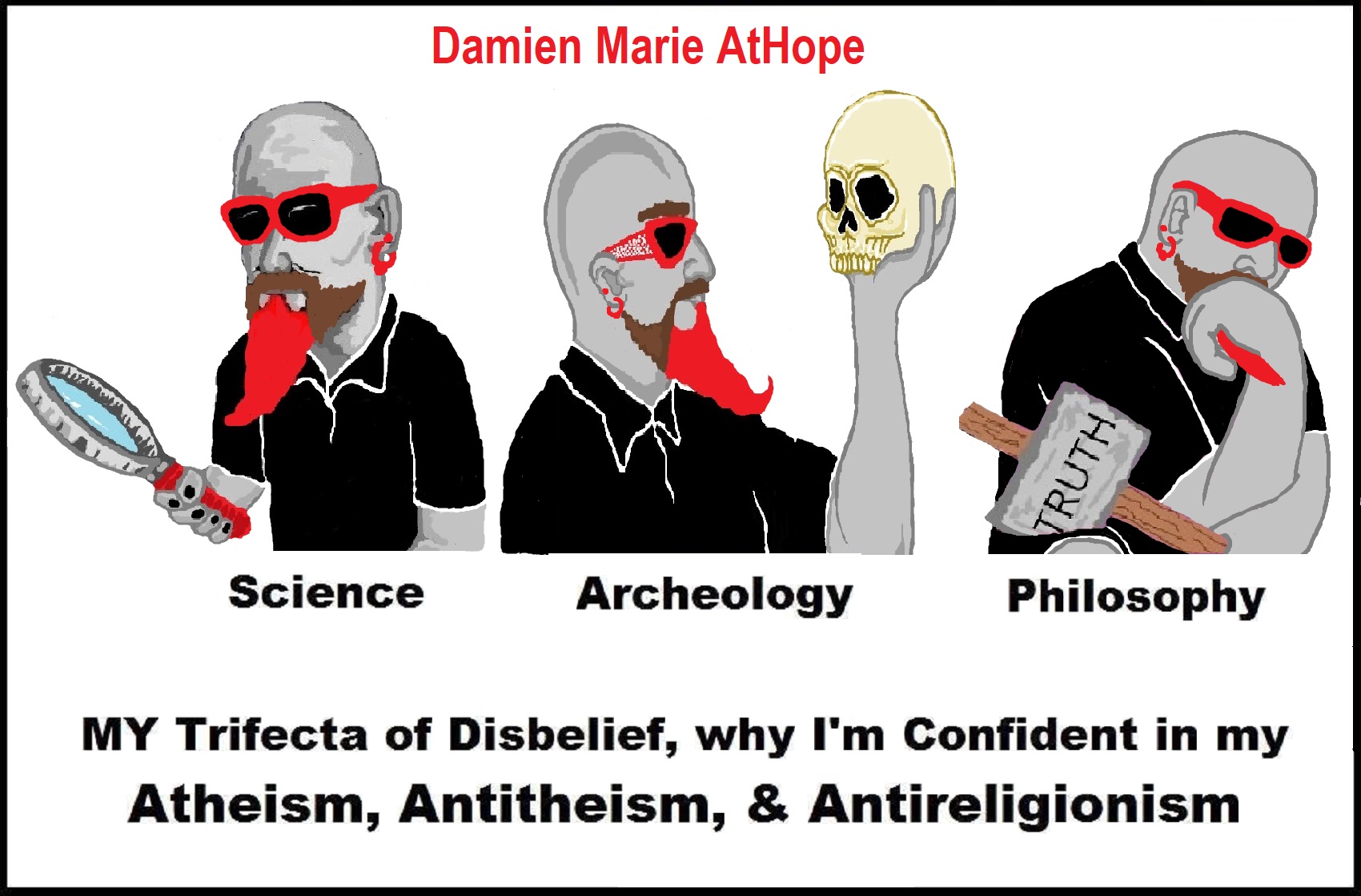
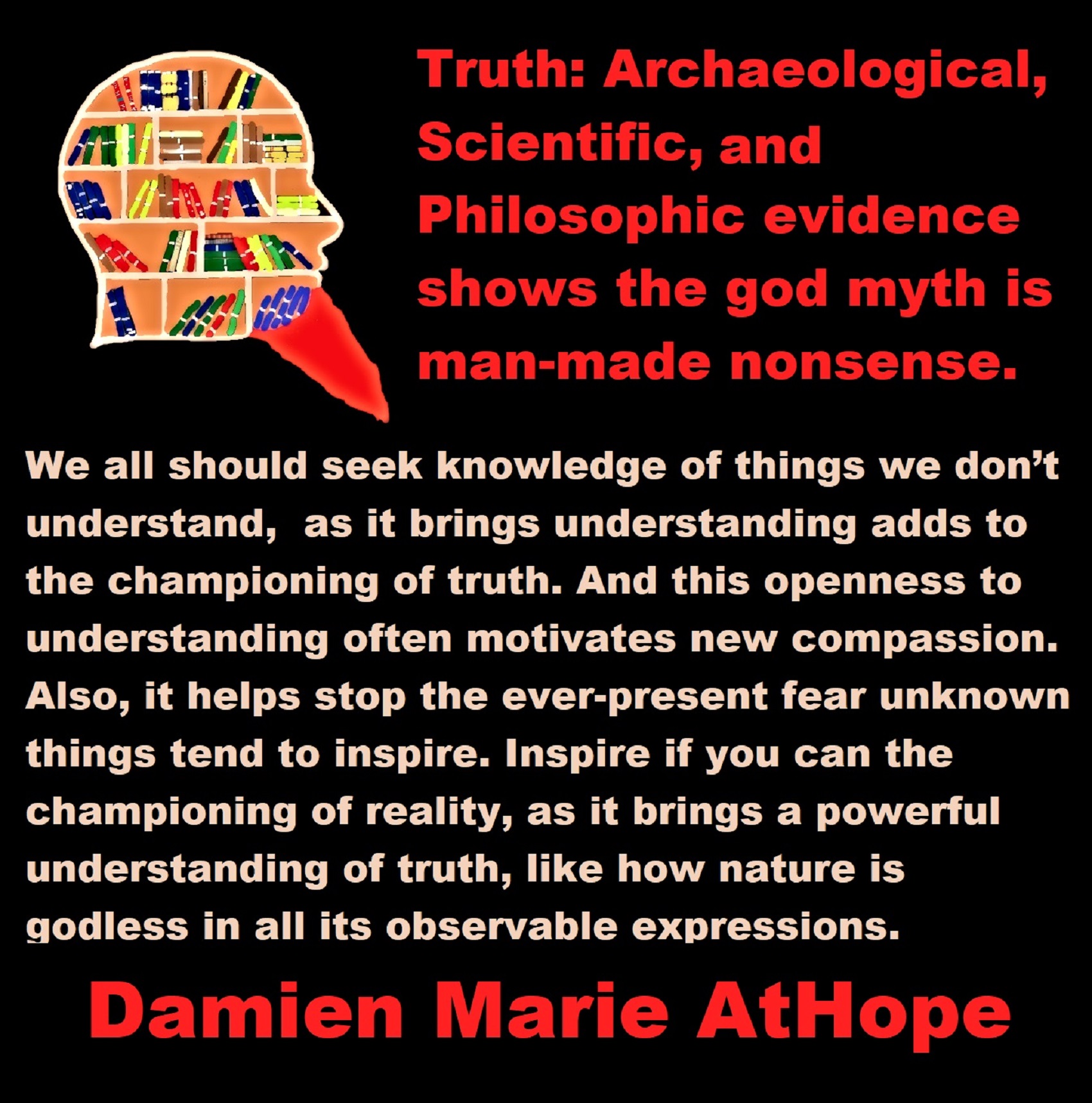
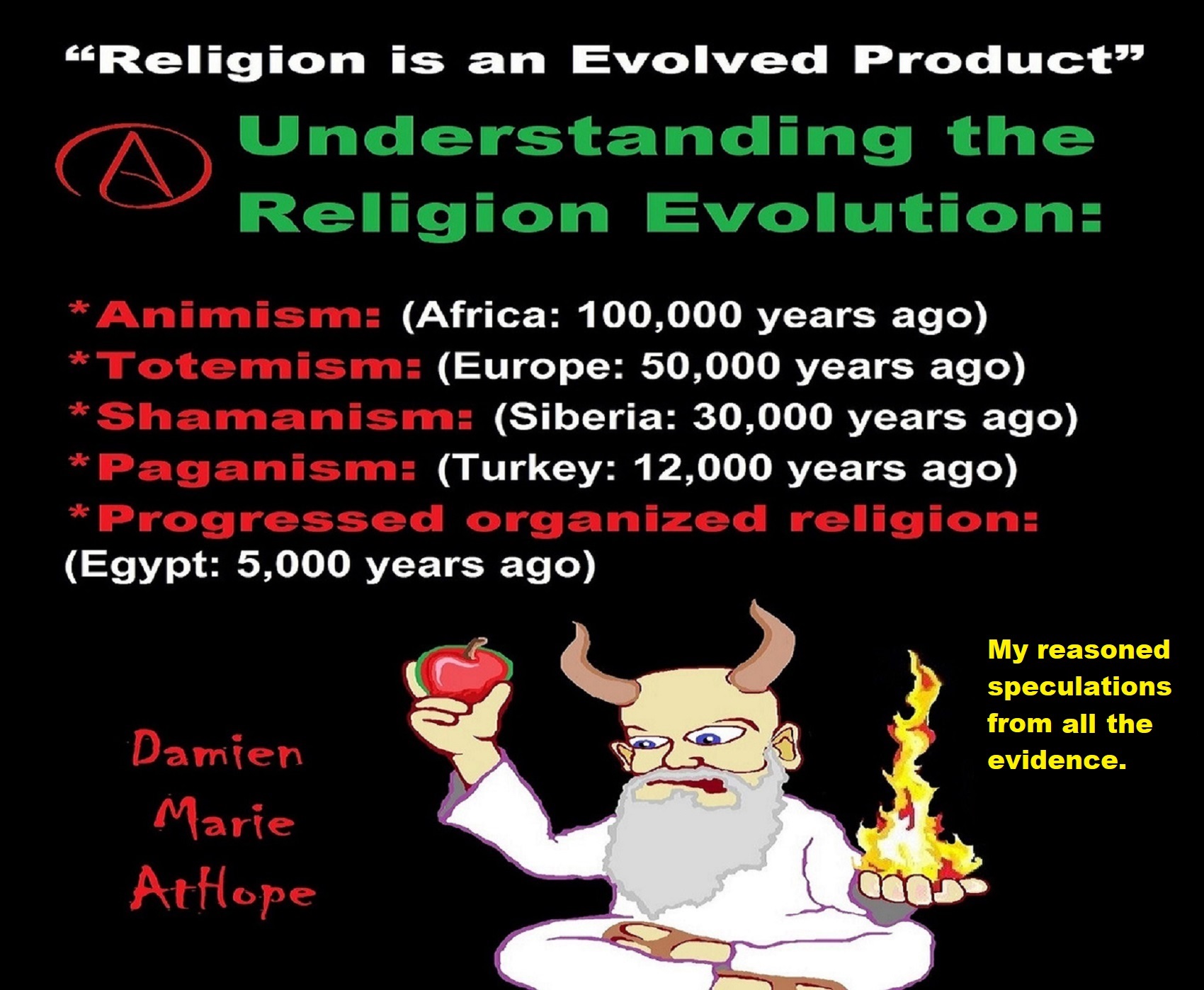
Not all “Religions” or “Religious Persuasions” have a god(s) but
All can be said to believe in some imaginary beings or imaginary things like spirits, afterlives, etc.
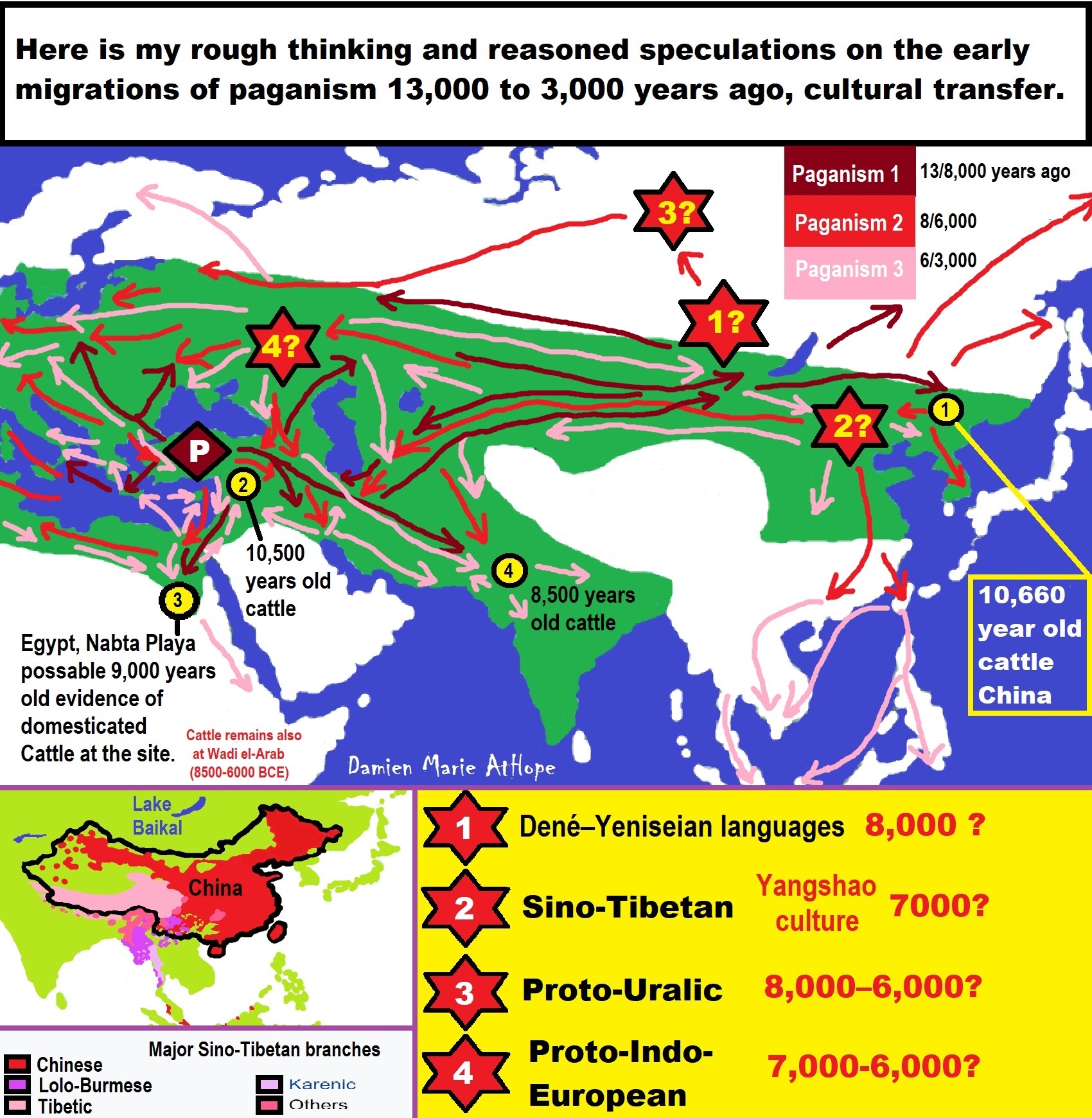
Paganism 12,000-4,000 years old
12,000-7,000 years old: related to (Pre-Capitalism)
7,000-5,000 years old: related to (Capitalism) (World War 0) Elite and their slaves!
5,000 years old: related to (Kings and the Rise of the State)
4,000 years old: related to (First Moralistic gods, then the Origin time of Monotheism)
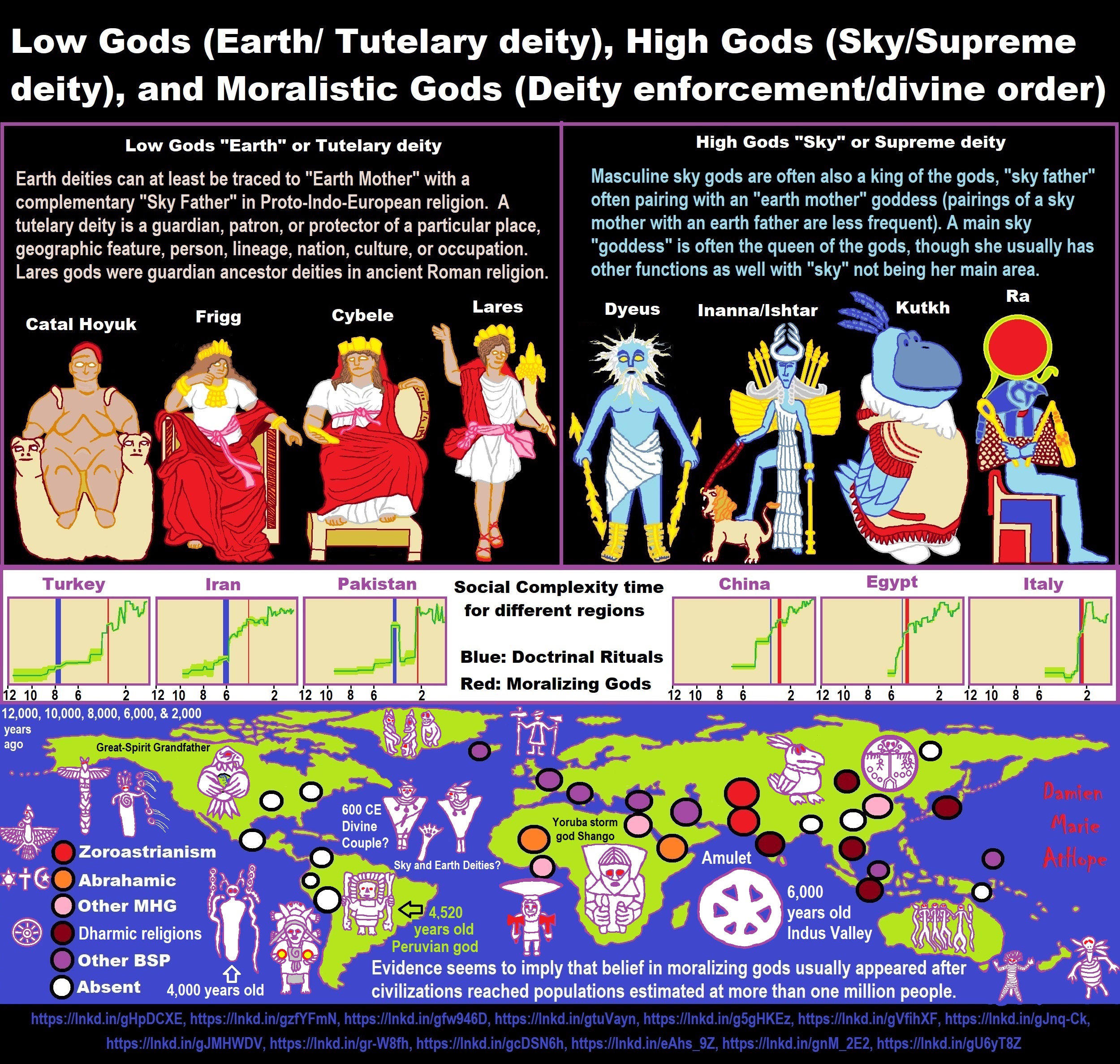
ref, ref, ref, ref, ref, ref, ref, ref, ref, ref, ref, ref, ref, ref, ref, ref, ref, ref, ref, ref, ref
Low Gods “Earth” or Tutelary deity and High Gods “Sky” or Supreme deity
“An Earth goddess is a deification of the Earth. Earth goddesses are often associated with the “chthonic” deities of the underworld. Ki and Ninhursag are Mesopotamian earth goddesses. In Greek mythology, the Earth is personified as Gaia, corresponding to Roman Terra, Indic Prithvi/Bhūmi, etc. traced to an “Earth Mother” complementary to the “Sky Father” in Proto-Indo-European religion. Egyptian mythology exceptionally has a sky goddess and an Earth god.” ref
“A mother goddess is a goddess who represents or is a personification of nature, motherhood, fertility, creation, destruction or who embodies the bounty of the Earth. When equated with the Earth or the natural world, such goddesses are sometimes referred to as Mother Earth or as the Earth Mother. In some religious traditions or movements, Heavenly Mother (also referred to as Mother in Heaven or Sky Mother) is the wife or feminine counterpart of the Sky father or God the Father.” ref
“Any masculine sky god is often also king of the gods, taking the position of patriarch within a pantheon. Such king gods are collectively categorized as “sky father” deities, with a polarity between sky and earth often being expressed by pairing a “sky father” god with an “earth mother” goddess (pairings of a sky mother with an earth father are less frequent). A main sky goddess is often the queen of the gods and may be an air/sky goddess in her own right, though she usually has other functions as well with “sky” not being her main. In antiquity, several sky goddesses in ancient Egypt, Mesopotamia, and the Near East were called Queen of Heaven. Neopagans often apply it with impunity to sky goddesses from other regions who were never associated with the term historically. The sky often has important religious significance. Many religions, both polytheistic and monotheistic, have deities associated with the sky.” ref
“In comparative mythology, sky father is a term for a recurring concept in polytheistic religions of a sky god who is addressed as a “father”, often the father of a pantheon and is often either a reigning or former King of the Gods. The concept of “sky father” may also be taken to include Sun gods with similar characteristics, such as Ra. The concept is complementary to an “earth mother“. “Sky Father” is a direct translation of the Vedic Dyaus Pita, etymologically descended from the same Proto-Indo-European deity name as the Greek Zeûs Pater and Roman Jupiter and Germanic Týr, Tir or Tiwaz, all of which are reflexes of the same Proto-Indo-European deity’s name, *Dyēus Ph₂tḗr. While there are numerous parallels adduced from outside of Indo-European mythology, there are exceptions (e.g. In Egyptian mythology, Nut is the sky mother and Geb is the earth father).” ref
Tutelary deity
“A tutelary (also tutelar) is a deity or spirit who is a guardian, patron, or protector of a particular place, geographic feature, person, lineage, nation, culture, or occupation. The etymology of “tutelary” expresses the concept of safety and thus of guardianship. In late Greek and Roman religion, one type of tutelary deity, the genius, functions as the personal deity or daimon of an individual from birth to death. Another form of personal tutelary spirit is the familiar spirit of European folklore.” ref
“A tutelary (also tutelar) in Korean shamanism, jangseung and sotdae were placed at the edge of villages to frighten off demons. They were also worshiped as deities. Seonangshin is the patron deity of the village in Korean tradition and was believed to embody the Seonangdang. In Philippine animism, Diwata or Lambana are deities or spirits that inhabit sacred places like mountains and mounds and serve as guardians. Such as: Maria Makiling is the deity who guards Mt. Makiling and Maria Cacao and Maria Sinukuan. In Shinto, the spirits, or kami, which give life to human bodies come from nature and return to it after death. Ancestors are therefore themselves tutelaries to be worshiped. And similarly, Native American beliefs such as Tonás, tutelary animal spirit among the Zapotec and Totems, familial or clan spirits among the Ojibwe, can be animals.” ref
“A tutelary (also tutelar) in Austronesian beliefs such as: Atua (gods and spirits of the Polynesian peoples such as the Māori or the Hawaiians), Hanitu (Bunun of Taiwan‘s term for spirit), Hyang (Kawi, Sundanese, Javanese, and Balinese Supreme Being, in ancient Java and Bali mythology and this spiritual entity, can be either divine or ancestral), Kaitiaki (New Zealand Māori term used for the concept of guardianship, for the sky, the sea, and the land), Kawas (mythology) (divided into 6 groups: gods, ancestors, souls of the living, spirits of living things, spirits of lifeless objects, and ghosts), Tiki (Māori mythology, Tiki is the first man created by either Tūmatauenga or Tāne and represents deified ancestors found in most Polynesian cultures). ” ref, ref, ref, ref, ref, ref, ref
Mesopotamian Tutelary Deities can be seen as ones related to City-States
“Historical city-states included Sumerian cities such as Uruk and Ur; Ancient Egyptian city-states, such as Thebes and Memphis; the Phoenician cities (such as Tyre and Sidon); the five Philistine city-states; the Berber city-states of the Garamantes; the city-states of ancient Greece (the poleis such as Athens, Sparta, Thebes, and Corinth); the Roman Republic (which grew from a city-state into a vast empire); the Italian city-states from the Middle Ages to the early modern period, such as Florence, Siena, Ferrara, Milan (which as they grew in power began to dominate neighboring cities) and Genoa and Venice, which became powerful thalassocracies; the Mayan and other cultures of pre-Columbian Mesoamerica (including cities such as Chichen Itza, Tikal, Copán and Monte Albán); the central Asian cities along the Silk Road; the city-states of the Swahili coast; Ragusa; states of the medieval Russian lands such as Novgorod and Pskov; and many others.” ref
“The Uruk period (ca. 4000 to 3100 BCE; also known as Protoliterate period) of Mesopotamia, named after the Sumerian city of Uruk, this period saw the emergence of urban life in Mesopotamia and the Sumerian civilization. City-States like Uruk and others had a patron tutelary City Deity along with a Priest-King.” ref
“Chinese folk religion, both past, and present, includes myriad tutelary deities. Exceptional individuals, highly cultivated sages, and prominent ancestors can be deified and honored after death. Lord Guan is the patron of military personnel and police, while Mazu is the patron of fishermen and sailors. Such as Tu Di Gong (Earth Deity) is the tutelary deity of a locality, and each individual locality has its own Earth Deity and Cheng Huang Gong (City God) is the guardian deity of an individual city, worshipped by local officials and locals since imperial times.” ref
“A tutelary (also tutelar) in Hinduism, personal tutelary deities are known as ishta-devata, while family tutelary deities are known as Kuladevata. Gramadevata are guardian deities of villages. Devas can also be seen as tutelary. Shiva is the patron of yogis and renunciants. City goddesses include: Mumbadevi (Mumbai), Sachchika (Osian); Kuladevis include: Ambika (Porwad), and Mahalakshmi. In NorthEast India Meitei mythology and religion (Sanamahism) of Manipur, there are various types of tutelary deities, among which Lam Lais are the most predominant ones. Tibetan Buddhism has Yidam as a tutelary deity. Dakini is the patron of those who seek knowledge.” ref
“A tutelary (also tutelar) The Greeks also thought deities guarded specific places: for instance, Athena was the patron goddess of the city of Athens. Socrates spoke of hearing the voice of his personal spirit or daimonion:
You have often heard me speak of an oracle or sign which comes to me … . This sign I have had ever since I was a child. The sign is a voice which comes to me and always forbids me to do something which I am going to do, but never commands me to do anything, and this is what stands in the way of my being a politician.” ref
“Tutelary deities who guard and preserve a place or a person are fundamental to ancient Roman religion. The tutelary deity of a man was his Genius, that of a woman her Juno. In the Imperial era, the Genius of the Emperor was a focus of Imperial cult. An emperor might also adopt a major deity as his personal patron or tutelary, as Augustus did Apollo. Precedents for claiming the personal protection of a deity were established in the Republican era, when for instance the Roman dictator Sulla advertised the goddess Victory as his tutelary by holding public games (ludi) in her honor.” ref
“Each town or city had one or more tutelary deities, whose protection was considered particularly vital in time of war and siege. Rome itself was protected by a goddess whose name was to be kept ritually secret on pain of death (for a supposed case, see Quintus Valerius Soranus). The Capitoline Triad of Juno, Jupiter, and Minerva were also tutelaries of Rome. The Italic towns had their own tutelary deities. Juno often had this function, as at the Latin town of Lanuvium and the Etruscan city of Veii, and was often housed in an especially grand temple on the arx (citadel) or other prominent or central location. The tutelary deity of Praeneste was Fortuna, whose oracle was renowned.” ref
“The Roman ritual of evocatio was premised on the belief that a town could be made vulnerable to military defeat if the power of its tutelary deity were diverted outside the city, perhaps by the offer of superior cult at Rome. The depiction of some goddesses such as the Magna Mater (Great Mother, or Cybele) as “tower-crowned” represents their capacity to preserve the city. A town in the provinces might adopt a deity from within the Roman religious sphere to serve as its guardian, or syncretize its own tutelary with such; for instance, a community within the civitas of the Remi in Gaul adopted Apollo as its tutelary, and at the capital of the Remi (present-day Rheims), the tutelary was Mars Camulus.” ref
Household deity (a kind of or related to a Tutelary deity)
“A household deity is a deity or spirit that protects the home, looking after the entire household or certain key members. It has been a common belief in paganism as well as in folklore across many parts of the world. Household deities fit into two types; firstly, a specific deity – typically a goddess – often referred to as a hearth goddess or domestic goddess who is associated with the home and hearth, such as the ancient Greek Hestia.” ref
“The second type of household deities are those that are not one singular deity, but a type, or species of animistic deity, who usually have lesser powers than major deities. This type was common in the religions of antiquity, such as the Lares of ancient Roman religion, the Gashin of Korean shamanism, and Cofgodas of Anglo-Saxon paganism. These survived Christianisation as fairy-like creatures existing in folklore, such as the Anglo-Scottish Brownie and Slavic Domovoy.” ref
“Household deities were usually worshipped not in temples but in the home, where they would be represented by small idols (such as the teraphim of the Bible, often translated as “household gods” in Genesis 31:19 for example), amulets, paintings, or reliefs. They could also be found on domestic objects, such as cosmetic articles in the case of Tawaret. The more prosperous houses might have a small shrine to the household god(s); the lararium served this purpose in the case of the Romans. The gods would be treated as members of the family and invited to join in meals, or be given offerings of food and drink.” ref
“In many religions, both ancient and modern, a god would preside over the home. Certain species, or types, of household deities, existed. An example of this was the Roman Lares. Many European cultures retained house spirits into the modern period. Some examples of these include:
- Brownie (Scotland and England) or Hob (England) / Kobold (Germany) / Goblin / Hobgoblin
- Domovoy (Slavic)
- Nisse (Norwegian or Danish) / Tomte (Swedish) / Tonttu (Finnish)
- Húsvættir (Norse)” ref
“Although the cosmic status of household deities was not as lofty as that of the Twelve Olympians or the Aesir, they were also jealous of their dignity and also had to be appeased with shrines and offerings, however humble. Because of their immediacy they had arguably more influence on the day-to-day affairs of men than the remote gods did. Vestiges of their worship persisted long after Christianity and other major religions extirpated nearly every trace of the major pagan pantheons. Elements of the practice can be seen even today, with Christian accretions, where statues to various saints (such as St. Francis) protect gardens and grottos. Even the gargoyles found on older churches, could be viewed as guardians partitioning a sacred space.” ref
“For centuries, Christianity fought a mop-up war against these lingering minor pagan deities, but they proved tenacious. For example, Martin Luther‘s Tischreden have numerous – quite serious – references to dealing with kobolds. Eventually, rationalism and the Industrial Revolution threatened to erase most of these minor deities, until the advent of romantic nationalism rehabilitated them and embellished them into objects of literary curiosity in the 19th century. Since the 20th century this literature has been mined for characters for role-playing games, video games, and other fantasy personae, not infrequently invested with invented traits and hierarchies somewhat different from their mythological and folkloric roots.” ref
“In contradistinction to both Herbert Spencer and Edward Burnett Tylor, who defended theories of animistic origins of ancestor worship, Émile Durkheim saw its origin in totemism. In reality, this distinction is somewhat academic, since totemism may be regarded as a particularized manifestation of animism, and something of a synthesis of the two positions was attempted by Sigmund Freud. In Freud’s Totem and Taboo, both totem and taboo are outward expressions or manifestations of the same psychological tendency, a concept which is complementary to, or which rather reconciles, the apparent conflict. Freud preferred to emphasize the psychoanalytic implications of the reification of metaphysical forces, but with particular emphasis on its familial nature. This emphasis underscores, rather than weakens, the ancestral component.” ref
“William Edward Hearn, a noted classicist, and jurist, traced the origin of domestic deities from the earliest stages as an expression of animism, a belief system thought to have existed also in the neolithic, and the forerunner of Indo-European religion. In his analysis of the Indo-European household, in Chapter II “The House Spirit”, Section 1, he states:
The belief which guided the conduct of our forefathers was … the spirit rule of dead ancestors.” ref
“In Section 2 he proceeds to elaborate:
It is thus certain that the worship of deceased ancestors is a vera causa, and not a mere hypothesis. …
In the other European nations, the Slavs, the Teutons, and the Kelts, the House Spirit appears with no less distinctness. … [T]he existence of that worship does not admit of doubt. … The House Spirits had a multitude of other names which it is needless here to enumerate, but all of which are more or less expressive of their friendly relations with man. … In [England] … [h]e is the Brownie. … In Scotland this same Brownie is well known. He is usually described as attached to particular families, with whom he has been known to reside for centuries, threshing the corn, cleaning the house, and performing similar household tasks. His favorite gratification was milk and honey.” ref
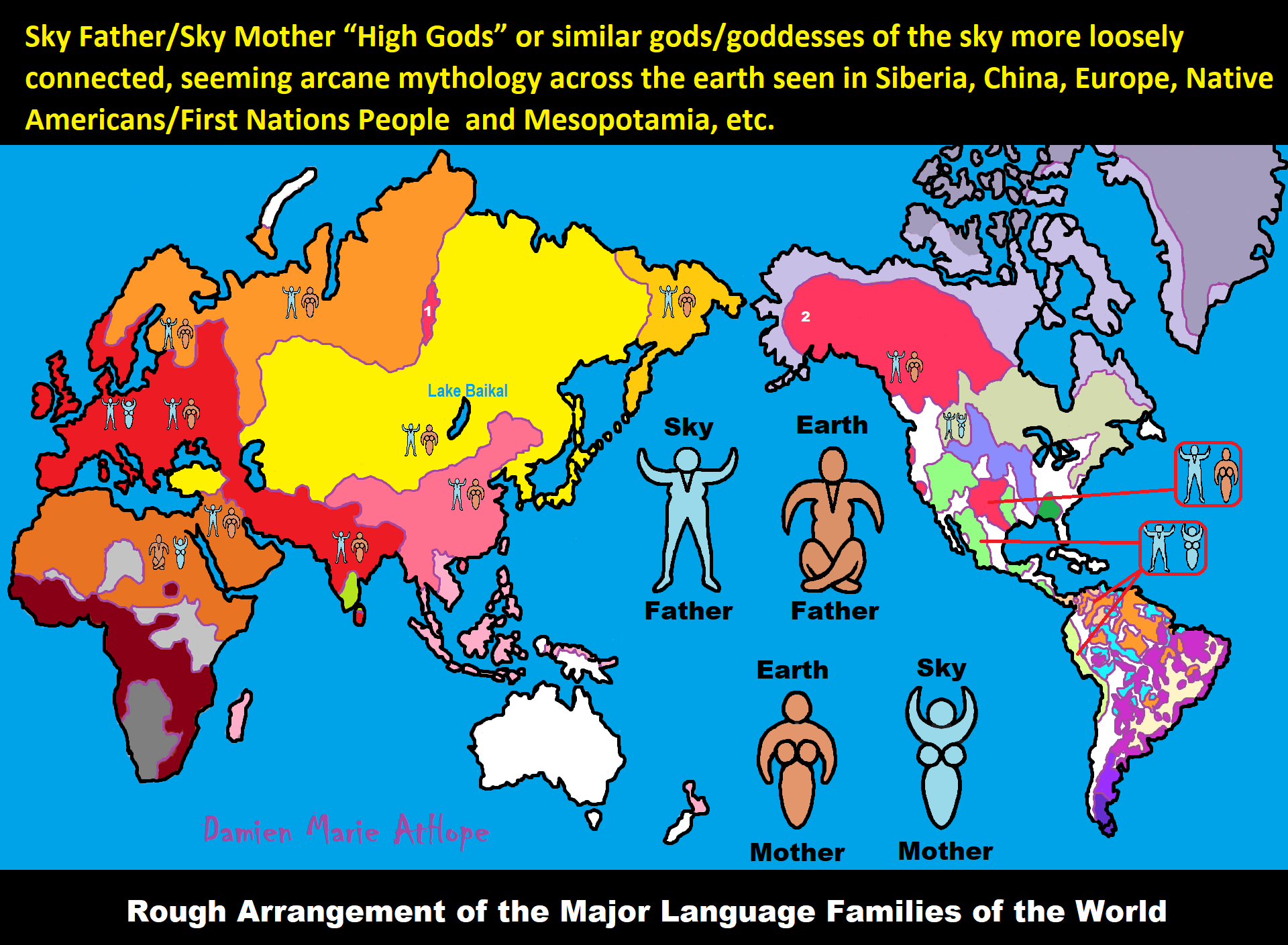
ref, ref, ref, ref, ref, ref, ref, ref, ref, ref, ref, ref, ref, ref, ref, ref, ref
“These ideas are my speculations from the evidence.”
I am still researching the “god‘s origins” all over the world. So you know, it is very complicated but I am smart and willing to look, DEEP, if necessary, which going very deep does seem to be needed here, when trying to actually understand the evolution of gods and goddesses. I am sure of a few things and less sure of others, but even in stuff I am not fully grasping I still am slowly figuring it out, to explain it to others. But as I research more I am understanding things a little better, though I am still working on understanding it all or something close and thus always figuring out more.
Sky Father/Sky God?
“Egyptian: (Nut) Sky Mother and (Geb) Earth Father” (Egypt is different but similar)
Turkic/Mongolic: (Tengri/Tenger Etseg) Sky Father and (Eje/Gazar Eej) Earth Mother *Transeurasian*
Hawaiian: (Wākea) Sky Father and (Papahānaumoku) Earth Mother *Austronesian*
New Zealand/ Māori: (Ranginui) Sky Father and (Papatūānuku) Earth Mother *Austronesian*
Proto-Indo-European: (Dyḗus/Dyḗus ph₂tḗr) Sky Father and (Dʰéǵʰōm/Pleth₂wih₁) Earth Mother
Indo-Aryan: (Dyaus Pita) Sky Father and (Prithvi Mata) Earth Mother *Indo-European*
Italic: (Jupiter) Sky Father and (Juno) Sky Mother *Indo-European*
Etruscan: (Tinia) Sky Father and (Uni) Sky Mother *Tyrsenian/Italy Pre–Indo-European*
Hellenic/Greek: (Zeus) Sky Father and (Hera) Sky Mother who started as an “Earth Goddess” *Indo-European*
Nordic: (Dagr) Sky Father and (Nótt) Sky Mother *Indo-European*
Slavic: (Perun) Sky Father and (Mokosh) Earth Mother *Indo-European*
Illyrian: (Deipaturos) Sky Father and (Messapic Damatura’s “earth-mother” maybe) Earth Mother *Indo-European*
Albanian: (Zojz) Sky Father and (?) *Indo-European*
Baltic: (Perkūnas) Sky Father and (Saulė) Sky Mother *Indo-European*
Germanic: (Týr) Sky Father and (?) *Indo-European*
Colombian-Muisca: (Bochica) Sky Father and (Huythaca) Sky Mother *Chibchan*
Aztec: (Quetzalcoatl) Sky Father and (Xochiquetzal) Sky Mother *Uto-Aztecan*
Incan: (Viracocha) Sky Father and (Mama Runtucaya) Sky Mother *Quechuan*
China: (Tian/Shangdi) Sky Father and (Dì) Earth Mother *Sino-Tibetan*
Sumerian, Assyrian and Babylonian: (An/Anu) Sky Father and (Ki) Earth Mother
Finnish: (Ukko) Sky Father and (Akka) Earth Mother *Finno-Ugric*
Sami: (Horagalles) Sky Father and (Ravdna) Earth Mother *Finno-Ugric*
Puebloan-Zuni: (Ápoyan Ta’chu) Sky Father and (Áwitelin Tsíta) Earth Mother
Puebloan-Hopi: (Tawa) Sky Father and (Kokyangwuti/Spider Woman/Grandmother) Earth Mother *Uto-Aztecan*
Puebloan-Navajo: (Tsohanoai) Sky Father and (Estsanatlehi) Earth Mother *Na-Dene*
ref, ref, ref, ref, ref, ref, ref, ref, ref, ref, ref, ref, ref, ref, ref, ref, ref, ref, ref, ref, ref, ref, ref, ref, ref, ref, ref
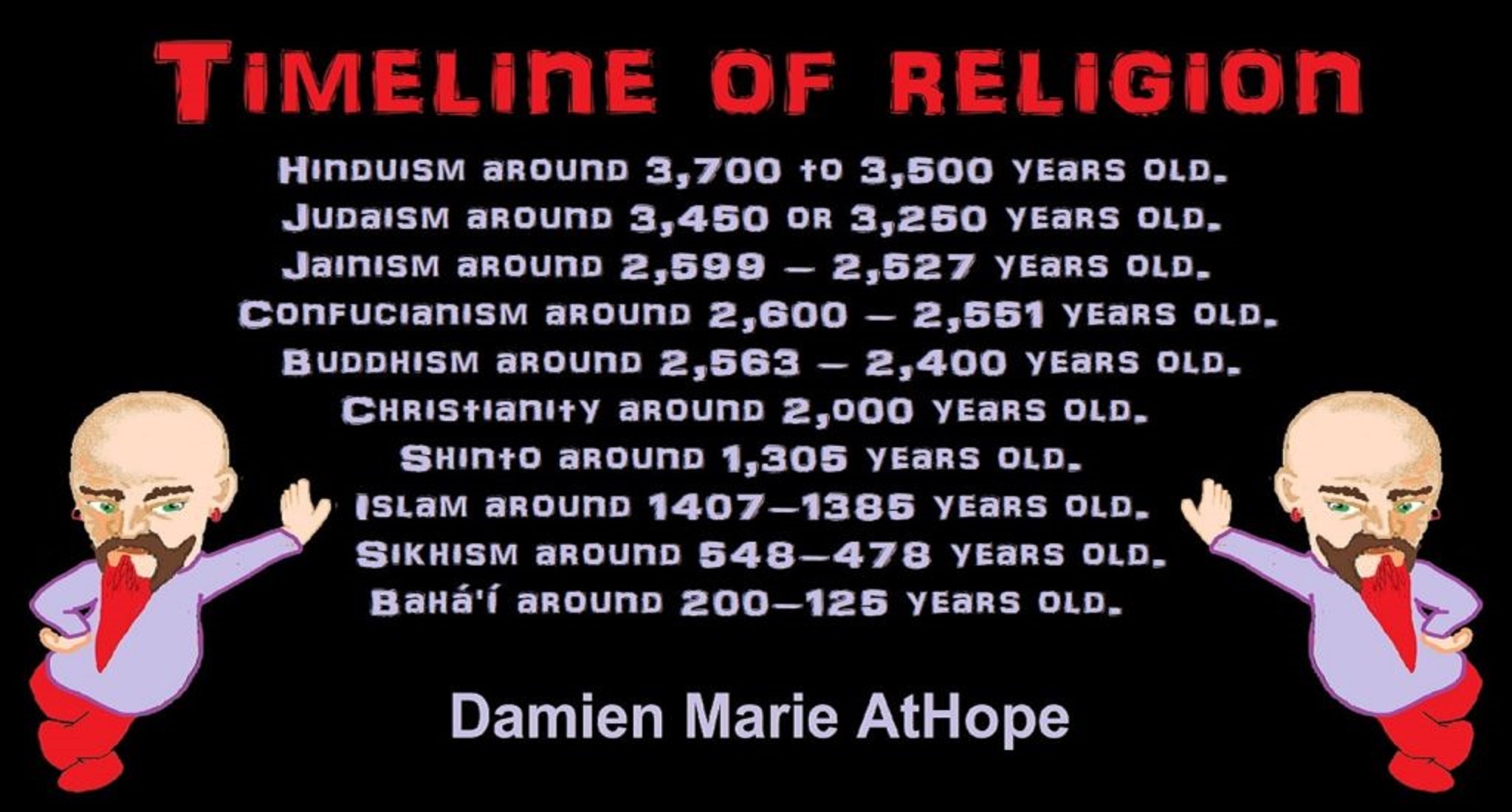
Hinduism around 3,700 to 3,500 years old. ref
Judaism around 3,450 or 3,250 years old. (The first writing in the bible was “Paleo-Hebrew” dated to around 3,000 years ago Khirbet Qeiyafa is the site of an ancient fortress city overlooking the Elah Valley. And many believe the religious Jewish texts were completed around 2,500) ref, ref
Judaism is around 3,450 or 3,250 years old. (“Paleo-Hebrew” 3,000 years ago and Torah 2,500 years ago)
“Judaism is an Abrahamic, its roots as an organized religion in the Middle East during the Bronze Age. Some scholars argue that modern Judaism evolved from Yahwism, the religion of ancient Israel and Judah, by the late 6th century BCE, and is thus considered to be one of the oldest monotheistic religions.” ref
“Yahwism is the name given by modern scholars to the religion of ancient Israel, essentially polytheistic, with a plethora of gods and goddesses. Heading the pantheon was Yahweh, the national god of the Israelite kingdoms of Israel and Judah, with his consort, the goddess Asherah; below them were second-tier gods and goddesses such as Baal, Shamash, Yarikh, Mot, and Astarte, all of whom had their own priests and prophets and numbered royalty among their devotees, and a third and fourth tier of minor divine beings, including the mal’ak, the messengers of the higher gods, who in later times became the angels of Judaism, Christianity and Islam. Yahweh, however, was not the ‘original’ god of Israel “Isra-El”; it is El, the head of the Canaanite pantheon, whose name forms the basis of the name “Israel”, and none of the Old Testament patriarchs, the tribes of Israel, the Judges, or the earliest monarchs, have a Yahwistic theophoric name (i.e., one incorporating the name of Yahweh).” ref
“El is a Northwest Semitic word meaning “god” or “deity“, or referring (as a proper name) to any one of multiple major ancient Near Eastern deities. A rarer form, ‘ila, represents the predicate form in Old Akkadian and in Amorite. The word is derived from the Proto-Semitic *ʔil-, meaning “god”. Specific deities known as ‘El or ‘Il include the supreme god of the ancient Canaanite religion and the supreme god of East Semitic speakers in Mesopotamia’s Early Dynastic Period. ʼĒl is listed at the head of many pantheons. In some Canaanite and Ugaritic sources, ʼĒl played a role as father of the gods, of creation, or both. For example, in the Ugaritic texts, ʾil mlk is understood to mean “ʼĒl the King” but ʾil hd as “the god Hadad“. The Semitic root ʾlh (Arabic ʾilāh, Aramaic ʾAlāh, ʾElāh, Hebrew ʾelōah) may be ʾl with a parasitic h, and ʾl may be an abbreviated form of ʾlh. In Ugaritic the plural form meaning “gods” is ʾilhm, equivalent to Hebrew ʾelōhîm “powers”. In the Hebrew texts this word is interpreted as being semantically singular for “god” by biblical commentators. However the documentary hypothesis for the Old Testament (corresponds to the Jewish Torah) developed originally in the 1870s, identifies these that different authors – the Jahwist, Elohist, Deuteronomist, and the Priestly source – were responsible for editing stories from a polytheistic religion into those of a monotheistic religion. Inconsistencies that arise between monotheism and polytheism in the texts are reflective of this hypothesis.” ref
Jainism around 2,599 – 2,527 years old. ref
Confucianism around 2,600 – 2,551 years old. ref
Buddhism around 2,563/2,480 – 2,483/2,400 years old. ref
Christianity around 2,o00 years old. ref
Shinto around 1,305 years old. ref
Islam around 1407–1385 years old. ref
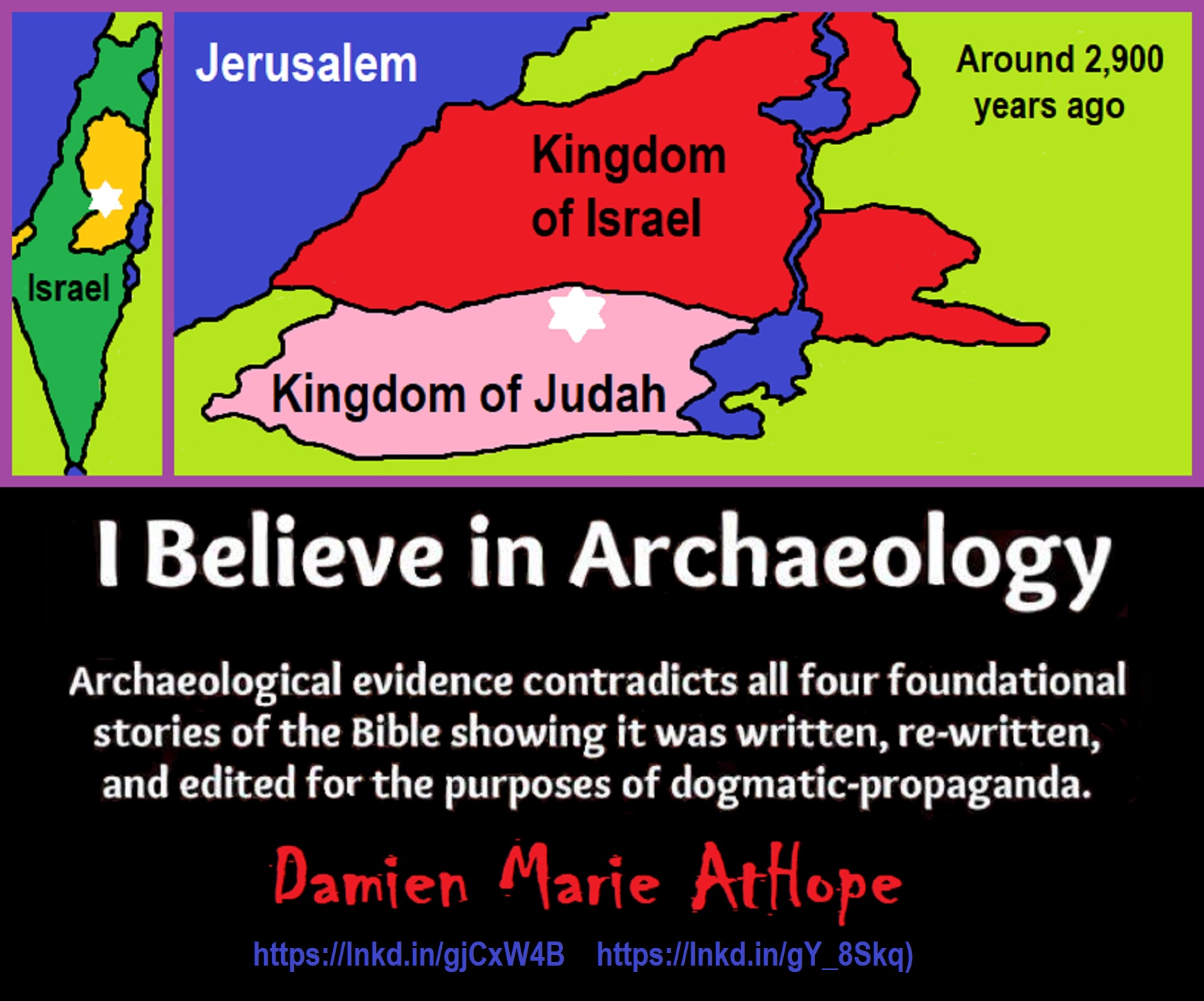
Knowledge to Ponder:
Stars/Astrology:
- Possibly, around 30,000 years ago (in simpler form) to 6,000 years ago, Stars/Astrology are connected to Ancestors, Spirit Animals, and Deities.
- The star also seems to be a possible proto-star for Star of Ishtar, Star of Inanna, or Star of Venus.
- Around 7,000 to 6,000 years ago, Star Constellations/Astrology have connections to the “Kurgan phenomenon” of below-ground “mound” stone/wood burial structures and “Dolmen phenomenon” of above-ground stone burial structures.
- Around 6,500–5,800 years ago, The Northern Levant migrations into Jordon and Israel in the Southern Levant brought new cultural and religious transfer from Turkey and Iran.
- “The Ghassulian Star,” a mysterious 6,000-year-old mural from Jordan may have connections to the European paganstic kurgan/dolmens phenomenon.
“Astrology is a range of divinatory practices, recognized as pseudoscientific since the 18th century, that claim to discern information about human affairs and terrestrial events by studying the apparent positions of celestial objects. Different cultures have employed forms of astrology since at least the 2nd millennium BCE, these practices having originated in calendrical systems used to predict seasonal shifts and to interpret celestial cycles as signs of divine communications. Most, if not all, cultures have attached importance to what they observed in the sky, and some—such as the Hindus, Chinese, and the Maya—developed elaborate systems for predicting terrestrial events from celestial observations. Western astrology, one of the oldest astrological systems still in use, can trace its roots to 19th–17th century BCE Mesopotamia, from where it spread to Ancient Greece, Rome, the Islamicate world and eventually Central and Western Europe. Contemporary Western astrology is often associated with systems of horoscopes that purport to explain aspects of a person’s personality and predict significant events in their lives based on the positions of celestial objects; the majority of professional astrologers rely on such systems.” ref
Around 5,500 years ago, Science evolves, The first evidence of science was 5,500 years ago and was demonstrated by a body of empirical, theoretical, and practical knowledge about the natural world. ref
Around 5,000 years ago, Origin of Logics is a Naturalistic Observation (principles of valid reasoning, inference, & demonstration) ref
Around 4,150 to 4,000 years ago: The earliest surviving versions of the Sumerian Epic of Gilgamesh, which was originally titled “He who Saw the Deep” (Sha naqba īmuru) or “Surpassing All Other Kings” (Shūtur eli sharrī) were written. ref
Hinduism:
- 3,700 years ago or so, the oldest of the Hindu Vedas (scriptures), the Rig Veda was composed.
- 3,500 years ago or so, the Vedic Age began in India after the collapse of the Indus Valley Civilization.
Judaism:
- around 3,000 years ago, the first writing in the bible was “Paleo-Hebrew”
- around 2,500 years ago, many believe the religious Jewish texts were completed
Myths: The bible inspired religion is not just one religion or one myth but a grouping of several religions and myths
- Around 3,450 or 3,250 years ago, according to legend, is the traditionally accepted period in which the Israelite lawgiver, Moses, provided the Ten Commandments.
- Around 2,500 to 2,400 years ago, a collection of ancient religious writings by the Israelites based primarily upon the Hebrew Bible, Tanakh, or Old Testament is the first part of Christianity’s bible.
- Around 2,400 years ago, the most accepted hypothesis is that the canon was formed in stages, first the Pentateuch (Torah).
- Around 2,140 to 2,116 years ago, the Prophets was written during the Hasmonean dynasty, and finally the remaining books.
- Christians traditionally divide the Old Testament into four sections:
- The first five books or Pentateuch (Torah).
- The proposed history books telling the history of the Israelites from their conquest of Canaan to their defeat and exile in Babylon.
- The poetic and proposed “Wisdom books” dealing, in various forms, with questions of good and evil in the world.
- The books of the biblical prophets, warning of the consequences of turning away from God:
- Henotheism:
- Exodus 20:23 “You shall not make other gods besides Me (not saying there are no other gods just not to worship them); gods of silver or gods of gold, you shall not make for yourselves.”
- Polytheism:
- Judges 10:6 “Then the sons of Israel again did evil in the sight of the LORD, served the Baals and the Ashtaroth, the gods of Aram, the gods of Sidon, the gods of Moab, the gods of the sons of Ammon, and the gods of the Philistines; thus they forsook the LORD and did not serve Him.”
- 1 Corinthians 8:5 “For even if there are so-called gods whether in heaven or on earth, as indeed there are many gods and many lords.”
- Monotheism:
- Isaiah 43:10 “You are my witnesses,” declares the LORD, “and my servant whom I have chosen, so that you may know and believe me and understand that I am he. Before me no god was formed, nor will there be one after me.
Around 2,570 to 2,270 Years Ago, there is a confirmation of atheistic doubting as well as atheistic thinking, mainly by Greek philosophers. However, doubting gods is likely as old as the invention of gods and should destroy the thinking that belief in god(s) is the “default belief”. The Greek word is apistos (a “not” and pistos “faithful,”), thus not faithful or faithless because one is unpersuaded and unconvinced by a god(s) claim. Short Definition: unbelieving, unbeliever, or unbelief.
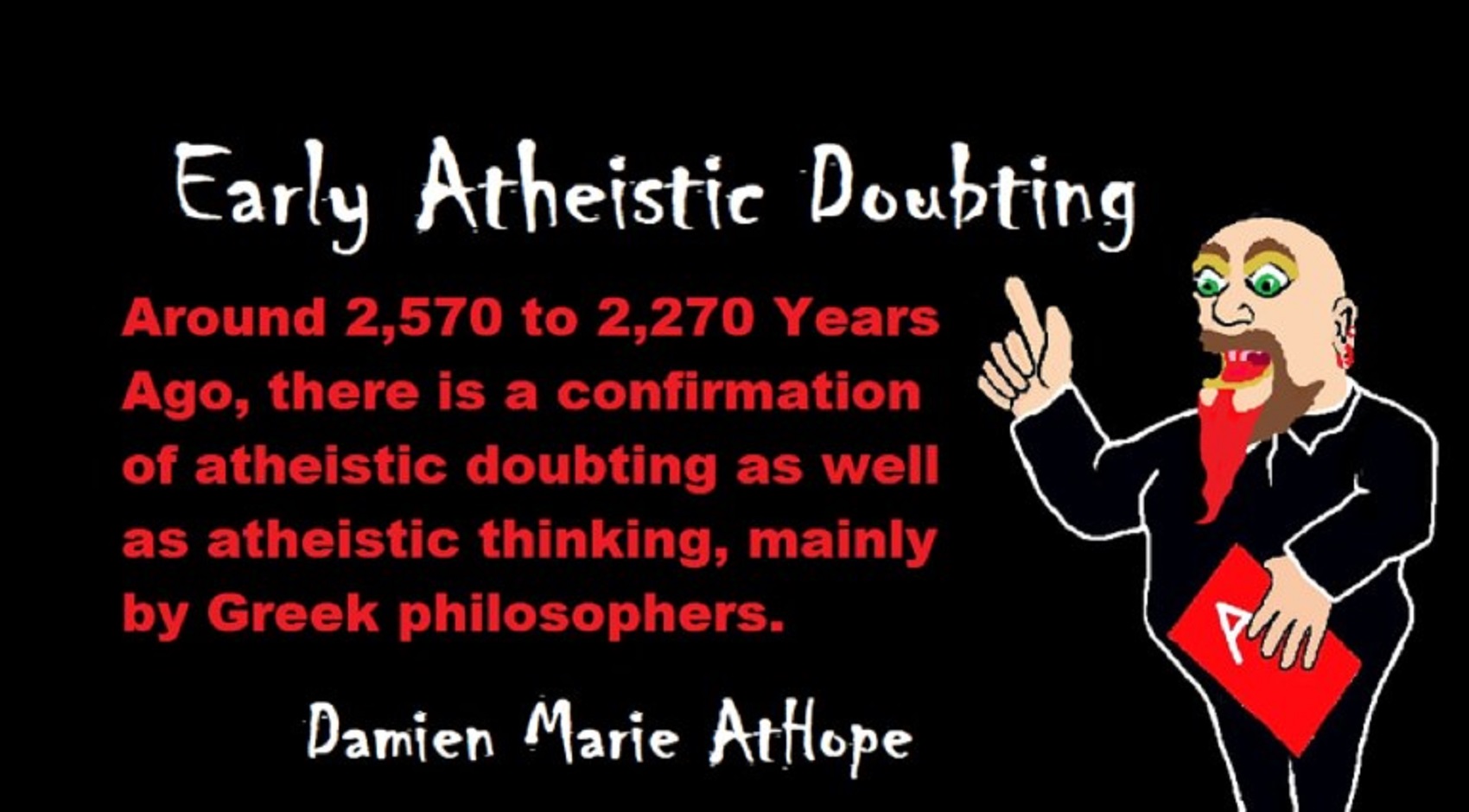
Expressions of Atheistic Thinking:
- Around 2,600 years ago, Ajita Kesakambali, ancient Indian philosopher, who is the first known proponent of Indian materialism. ref
- Around 2,535 to 2,475 years ago, Heraclitus, Greek pre-Socratic philosopher, a native of the Greek city Ephesus, Ionia, on the coast of Anatolia, also known as Asia Minor or modern Turkey. ref
- Around 2,500 to 2,400 years ago, according to The Story of Civilization book series certain African pygmy tribes have no identifiable gods, spirits, or religious beliefs or rituals, and even what burials accrue are without ceremony. ref
- Around 2,490 to 2,430 years ago, Empedocles, Greek pre-Socratic philosopher and a citizen of Agrigentum, a Greek city in Sicily. ref
- Around 2,460 to 2,370 years ago, Democritus, Greek pre-Socratic philosopher considered to be the “father of modern science” possibly had some disbelief amounting to atheism. ref
- Around 2,399 years ago or so, Socrates, a famous Greek philosopher was tried for sinfulness by teaching doubt of state gods. ref
- Around 2,341 to 2,270 years ago, Epicurus, a Greek philosopher known for composing atheistic critics and famously stated, “Is God willing to prevent evil, but not able? Then he is not omnipotent. Is he able, but not willing? Then he is malevolent. Is he both able and willing? Then whence cometh evil? Is he neither able nor willing? Then why call him god?” ref
This last expression by Epicurus, seems to be an expression of Axiological Atheism. To understand and utilize value or actually possess “Value Conscious/Consciousness” to both give a strong moral “axiological” argument (the problem of evil) as well as use it to fortify humanism and positive ethical persuasion of human helping and care responsibilities. Because value-blindness gives rise to sociopathic/psychopathic evil.

“Theists, there has to be a god, as something can not come from nothing.”
Well, thus something (unknown) happened and then there was something. This does not tell us what the something that may have been involved with something coming from nothing. A supposed first cause, thus something (unknown) happened and then there was something is not an open invitation to claim it as known, neither is it justified to call or label such an unknown as anything, especially an unsubstantiated magical thinking belief born of mythology and religious storytelling.
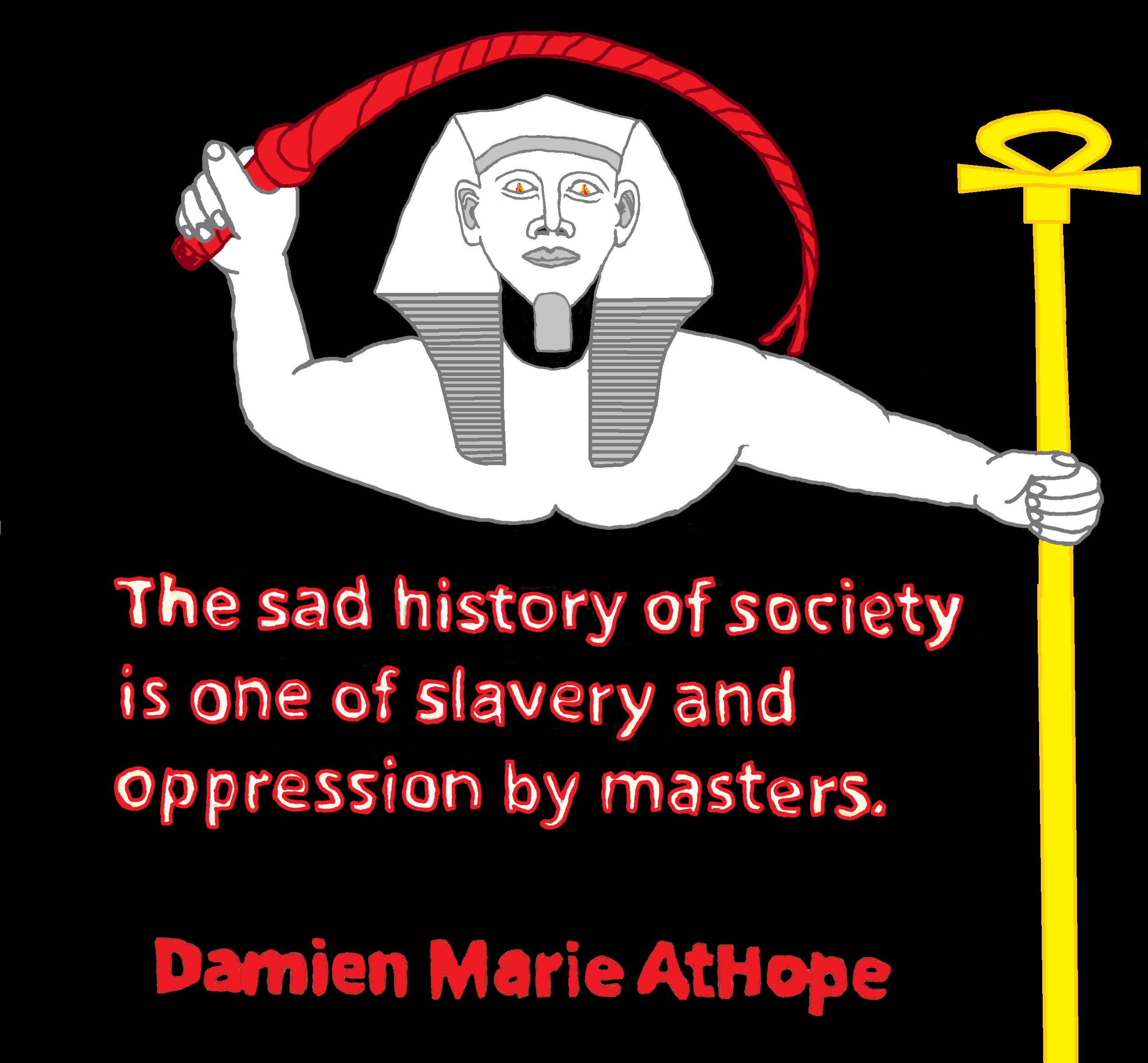

While hallucinogens are associated with shamanism, it is alcohol that is associated with paganism.
The Atheist-Humanist-Leftist Revolutionaries Shows in the prehistory series:
Show two: Pre-animism 300,000 years old and animism 100,000 years old: related to “Anarchism and Socialism”
Show tree: Totemism 50,000 years old: related to “Anarchism and Socialism”
Show four: Shamanism 30,000 years old: related to “Anarchism and Socialism”
Show five: Paganism 12,000 years old: related to “Anarchism and Socialism”
Show six: Emergence of hierarchy, sexism, slavery, and the new male god dominance: Paganism 7,000-5,000 years old: related to “Anarchism and Socialism” (Capitalism) (World War 0) Elite and their slaves!
Prehistory: related to “Anarchism and Socialism” the division of labor, power, rights, and recourses: VIDEO
Pre-animism 300,000 years old and animism 100,000 years old: related to “Anarchism and Socialism”: VIDEO
Totemism 50,000 years old: related to “Anarchism and Socialism”: VIDEO
Shamanism 30,000 years old: related to “Anarchism and Socialism”: VIDEO
Paganism 12,000 years old: related to “Anarchism and Socialism” (Pre-Capitalism): VIDEO
Paganism 7,000-5,000 years old: related to “Anarchism and Socialism” (Capitalism) (World War 0) Elite and their slaves: VIEDO
Paganism 5,000 years old: progressed organized religion and the state: related to “Anarchism and Socialism” (Kings and the Rise of the State): VIEDO
Paganism 4,000 years old: related to “Anarchism and Socialism” (First Moralistic gods, then the Origin time of Monotheism): VIEDO
I do not hate simply because I challenge and expose myths or lies any more than others being thought of as loving simply because of the protection and hiding from challenge their favored myths or lies.
The truth is best championed in the sunlight of challenge.
An archaeologist once said to me “Damien religion and culture are very different”
My response, So are you saying that was always that way, such as would you say Native Americans’ cultures are separate from their religions? And do you think it always was the way you believe?
I had said that religion was a cultural product. That is still how I see it and there are other archaeologists that think close to me as well. Gods too are the myths of cultures that did not understand science or the world around them, seeing magic/supernatural everywhere.
I personally think there is a goddess and not enough evidence to support a male god at Çatalhöyük but if there was both a male and female god and goddess then I know the kind of gods they were like Proto-Indo-European mythology.
This series idea was addressed in, Anarchist Teaching as Free Public Education or Free Education in the Public: VIDEO
Our 12 video series: Organized Oppression: Mesopotamian State Force and the Politics of power (9,000-4,000 years ago), is adapted from: The Complete and Concise History of the Sumerians and Early Bronze Age Mesopotamia (7000-2000 BC): https://www.youtube.com/watch?v=szFjxmY7jQA by “History with Cy“
Show #1: Mesopotamian State Force and the Politics of Power (Samarra, Halaf, Ubaid)
Show #2: Mesopotamian State Force and the Politics of Power
Show #3: Mesopotamian State Force and the Politics of Power (Uruk and the First Cities)
Show #4: Mesopotamian State Force and the Politics of Power (First Kings)
Show #5: Mesopotamian State Force and the Politics of Power (Early Dynastic Period)
Show #6: Mesopotamian State Force and the Politics of Power
Show #7: Mesopotamian State Force and the Politics of Power (Sargon and Akkadian Rule)
Show #9: Mesopotamian State Force and the Politics of Power (Gudea of Lagash and Utu-hegal)
Show #12: Mesopotamian State Force and the Politics of Power (Aftermath and Legacy of Sumer)
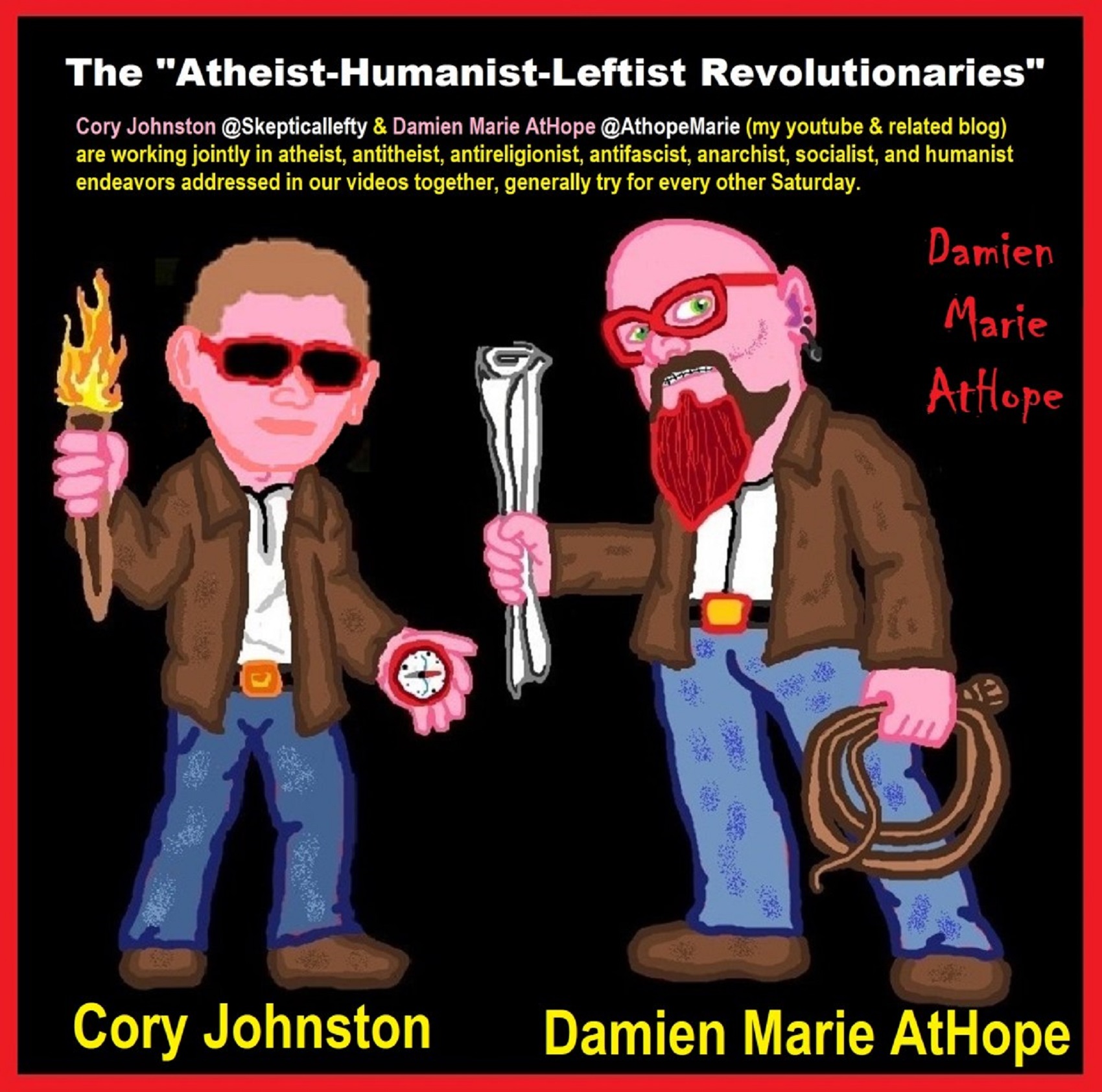
The “Atheist-Humanist-Leftist Revolutionaries”
Cory Johnston ☭ Ⓐ Atheist Leftist @Skepticallefty & I (Damien Marie AtHope) @AthopeMarie (my YouTube & related blog) are working jointly in atheist, antitheist, antireligionist, antifascist, anarchist, socialist, and humanist endeavors in our videos together, generally, every other Saturday.
Why Does Power Bring Responsibility?
Think, how often is it the powerless that start wars, oppress others, or commit genocide? So, I guess the question is to us all, to ask, how can power not carry responsibility in a humanity concept? I know I see the deep ethical responsibility that if there is power their must be a humanistic responsibility of ethical and empathic stewardship of that power. Will I be brave enough to be kind? Will I possess enough courage to be compassionate? Will my valor reach its height of empathy? I as everyone, earns our justified respect by our actions, that are good, ethical, just, protecting, and kind. Do I have enough self-respect to put my love for humanity’s flushing, over being brought down by some of its bad actors? May we all be the ones doing good actions in the world, to help human flourishing.
I create the world I want to live in, striving for flourishing. Which is not a place but a positive potential involvement and promotion; a life of humanist goal precision. To master oneself, also means mastering positive prosocial behaviors needed for human flourishing. I may have lost a god myth as an atheist, but I am happy to tell you, my friend, it is exactly because of that, leaving the mental terrorizer, god belief, that I truly regained my connected ethical as well as kind humanity.
Cory and I will talk about prehistory and theism, addressing the relevance to atheism, anarchism, and socialism.
At the same time as the rise of the male god, 7,000 years ago, there was also the very time there was the rise of violence, war, and clans to kingdoms, then empires, then states. It is all connected back to 7,000 years ago, and it moved across the world.
Cory Johnston: https://damienmarieathope.com/2021/04/cory-johnston-mind-of-a-skeptical-leftist/?v=32aec8db952d
The Mind of a Skeptical Leftist (YouTube)
Cory Johnston: Mind of a Skeptical Leftist @Skepticallefty
The Mind of a Skeptical Leftist By Cory Johnston: “Promoting critical thinking, social justice, and left-wing politics by covering current events and talking to a variety of people. Cory Johnston has been thoughtfully talking to people and attempting to promote critical thinking, social justice, and left-wing politics.” http://anchor.fm/skepticalleft
Cory needs our support. We rise by helping each other.
Cory Johnston ☭ Ⓐ @Skepticallefty Evidence-based atheist leftist (he/him) Producer, host, and co-host of 4 podcasts @skeptarchy @skpoliticspod and @AthopeMarie
Damien Marie AtHope (“At Hope”) Axiological Atheist, Anti-theist, Anti-religionist, Secular Humanist. Rationalist, Writer, Artist, Poet, Philosopher, Advocate, Activist, Psychology, and Armchair Archaeology/Anthropology/Historian.
Damien is interested in: Freedom, Liberty, Justice, Equality, Ethics, Humanism, Science, Atheism, Antiteism, Antireligionism, Ignosticism, Left-Libertarianism, Anarchism, Socialism, Mutualism, Axiology, Metaphysics, LGBTQI, Philosophy, Advocacy, Activism, Mental Health, Psychology, Archaeology, Social Work, Sexual Rights, Marriage Rights, Woman’s Rights, Gender Rights, Child Rights, Secular Rights, Race Equality, Ageism/Disability Equality, Etc. And a far-leftist, “Anarcho-Humanist.”
I am not a good fit in the atheist movement that is mostly pro-capitalist, I am anti-capitalist. Mostly pro-skeptic, I am a rationalist not valuing skepticism. Mostly pro-agnostic, I am anti-agnostic. Mostly limited to anti-Abrahamic religions, I am an anti-religionist.
To me, the “male god” seems to have either emerged or become prominent around 7,000 years ago, whereas the now favored monotheism “male god” is more like 4,000 years ago or so. To me, the “female goddess” seems to have either emerged or become prominent around 11,000-10,000 years ago or so, losing the majority of its once prominence around 2,000 years ago due largely to the now favored monotheism “male god” that grow in prominence after 4,000 years ago or so.
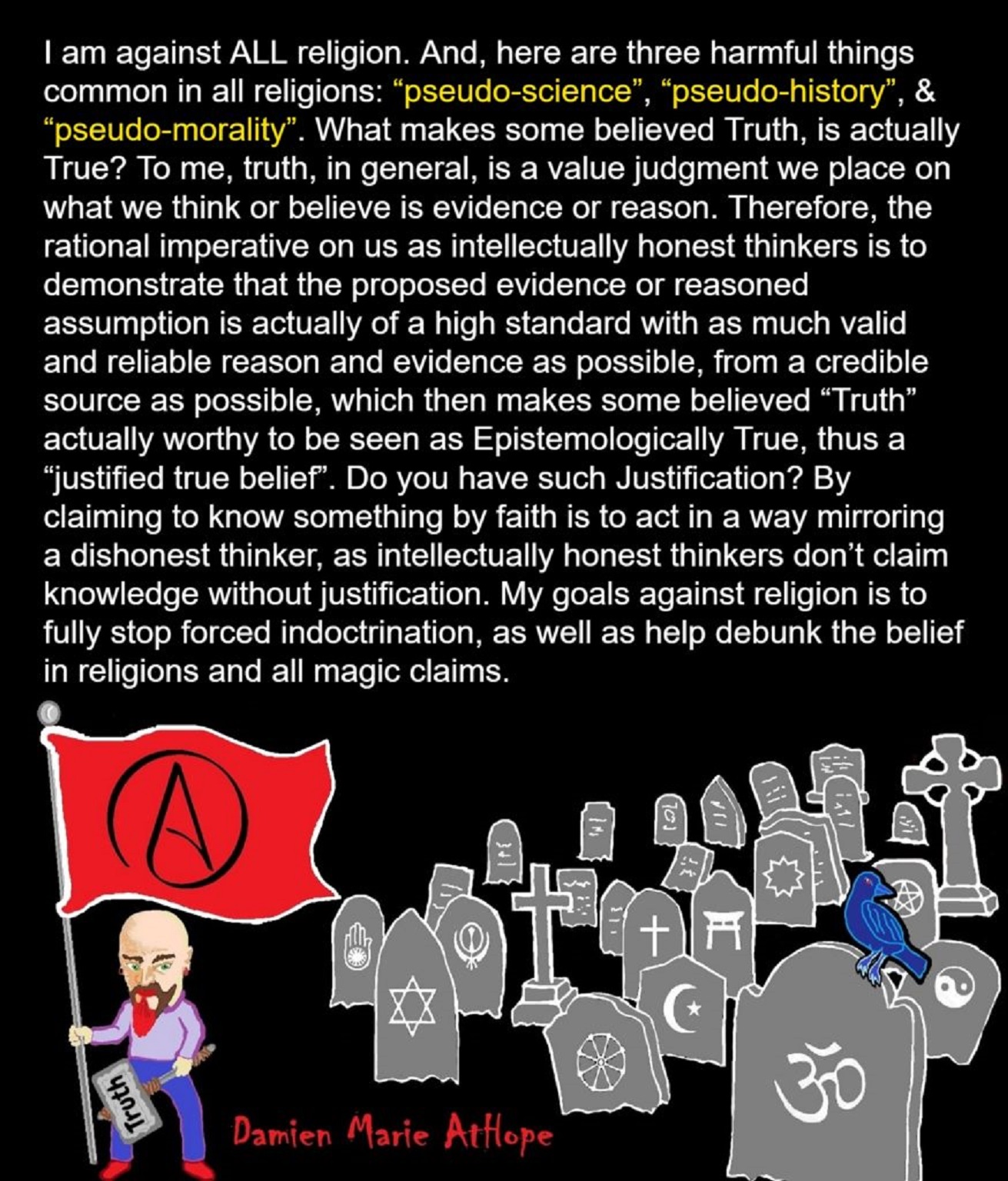

Damien Marie AtHope (Said as “At” “Hope”)/(Autodidact Polymath but not good at math):
Axiological Atheist, Anti-theist, Anti-religionist, Secular Humanist, Rationalist, Writer, Artist, Jeweler, Poet, “autodidact” Philosopher, schooled in Psychology, and “autodidact” Armchair Archaeology/Anthropology/Pre-Historian (Knowledgeable in the range of: 1 million to 5,000/4,000 years ago). I am an anarchist socialist politically. Reasons for or Types of Atheism
My Website, My Blog, & Short-writing or Quotes, My YouTube, Twitter: @AthopeMarie, and My Email: damien.marie.athope@gmail.com

